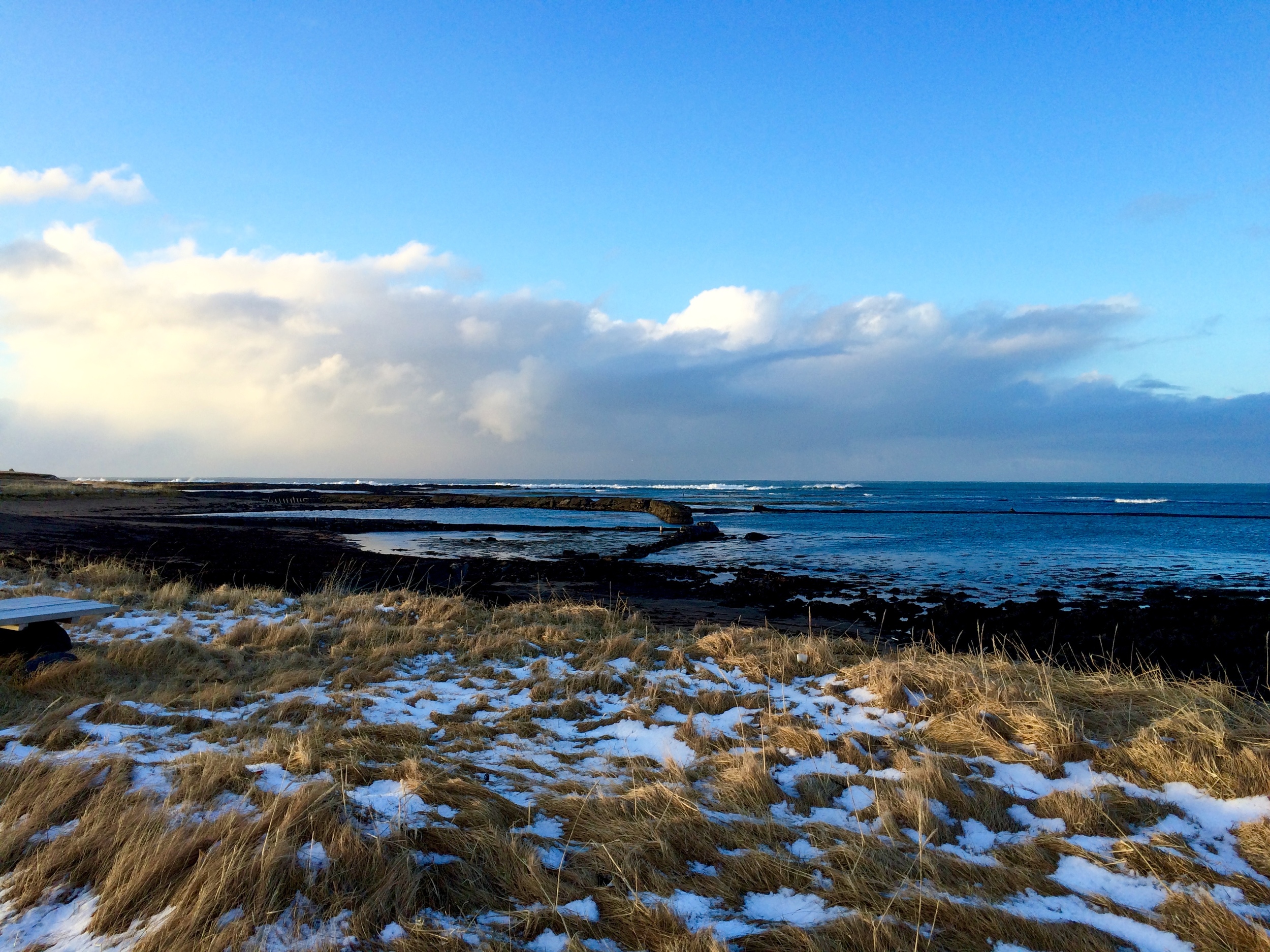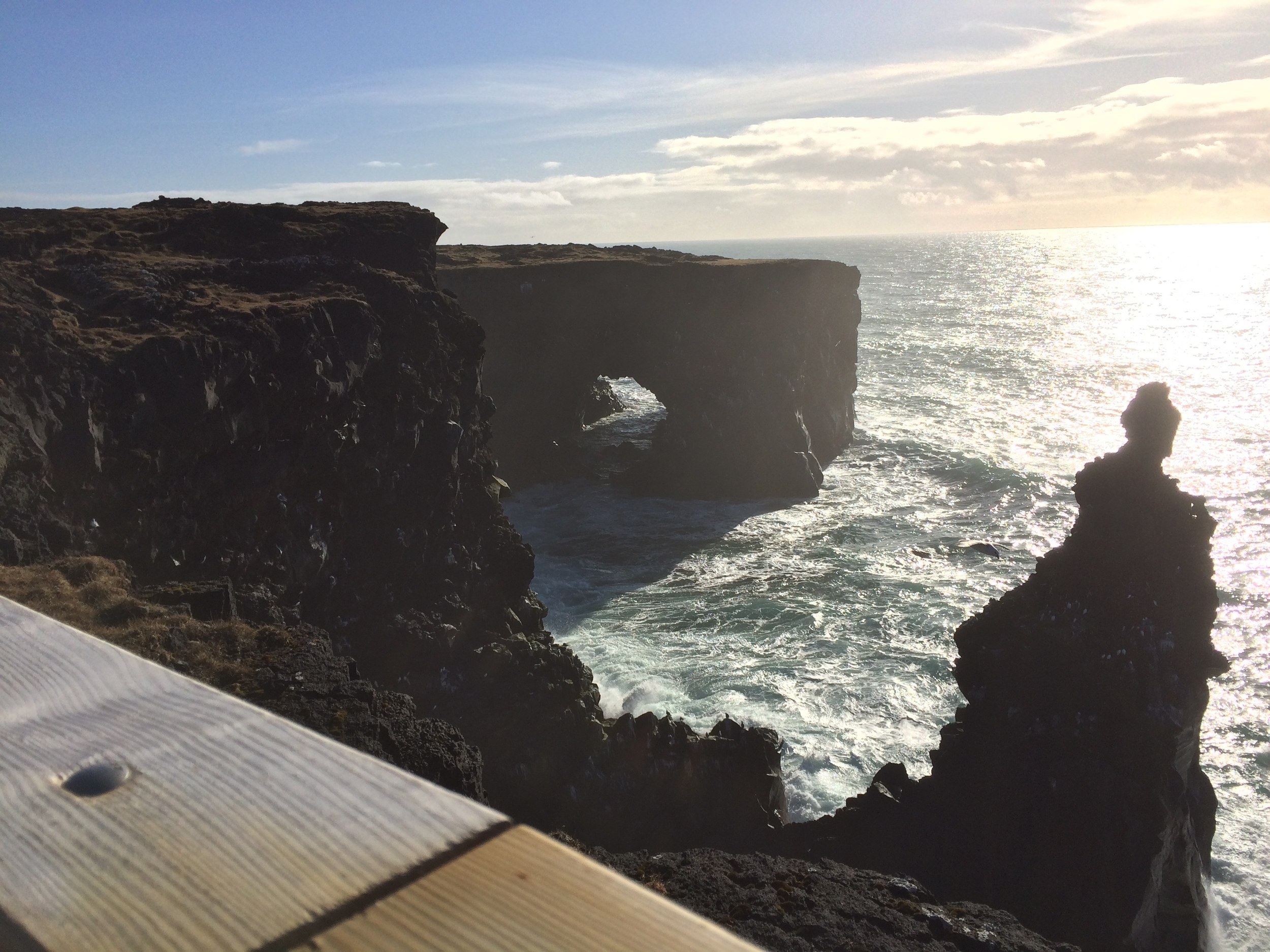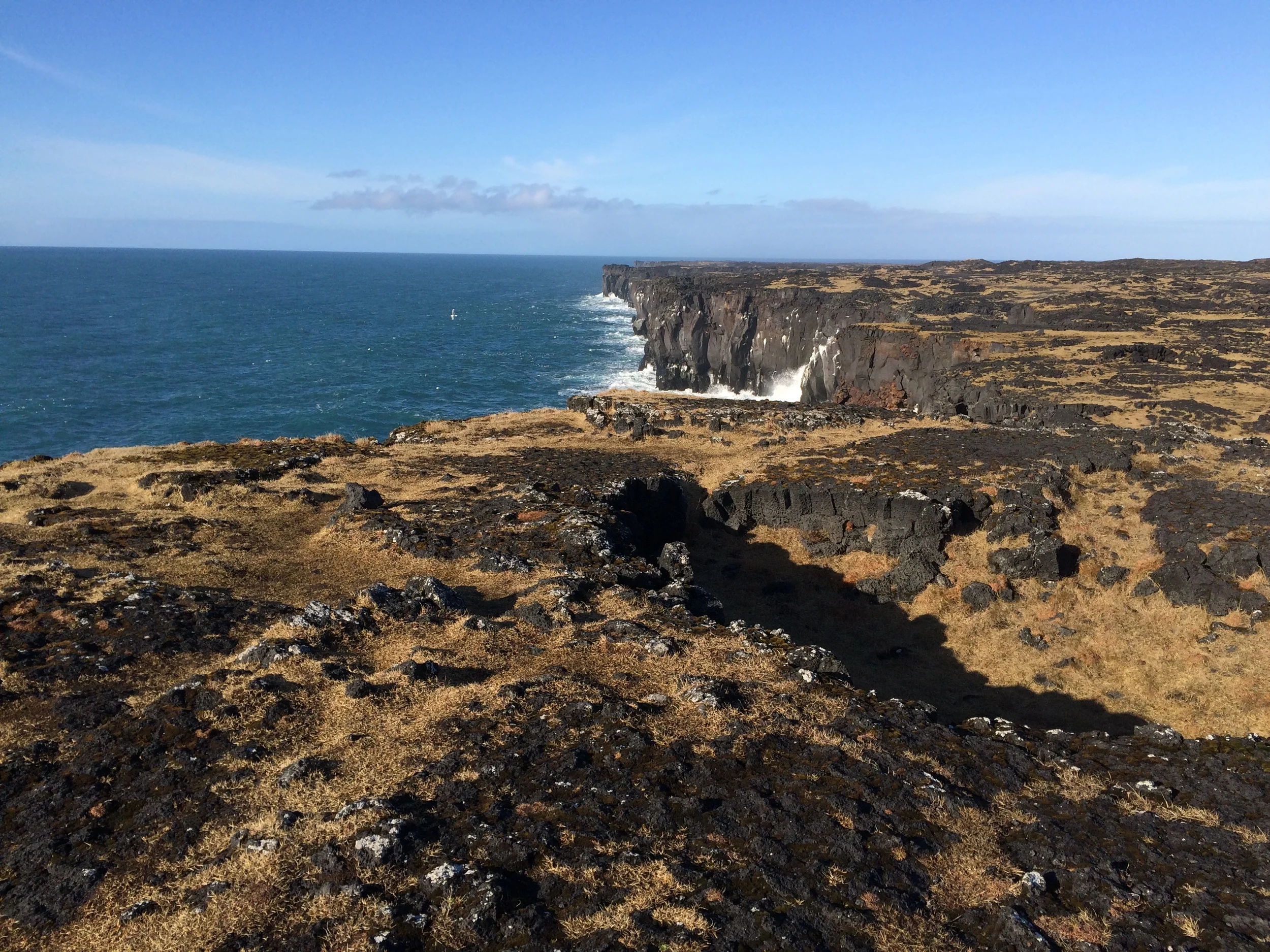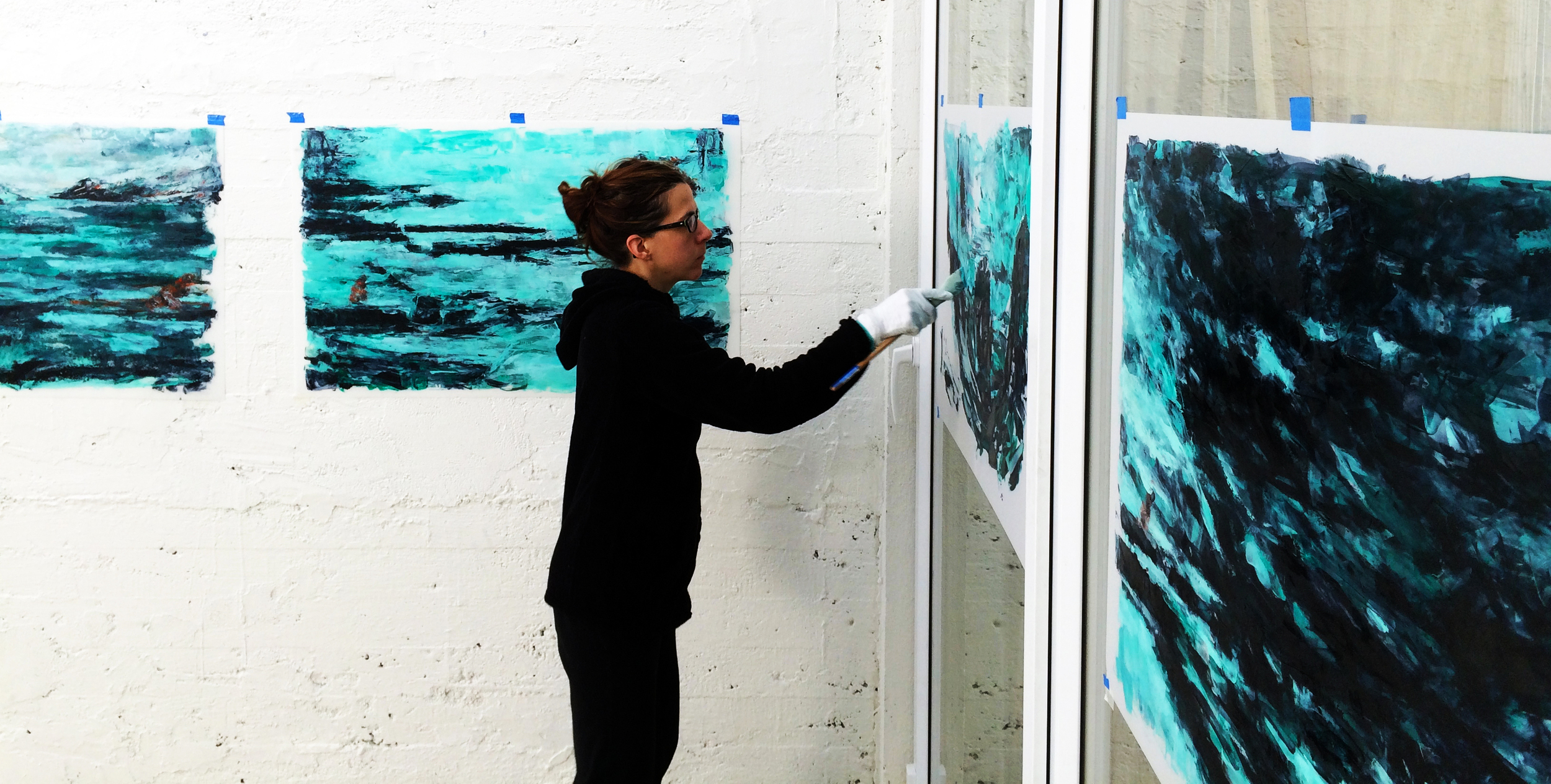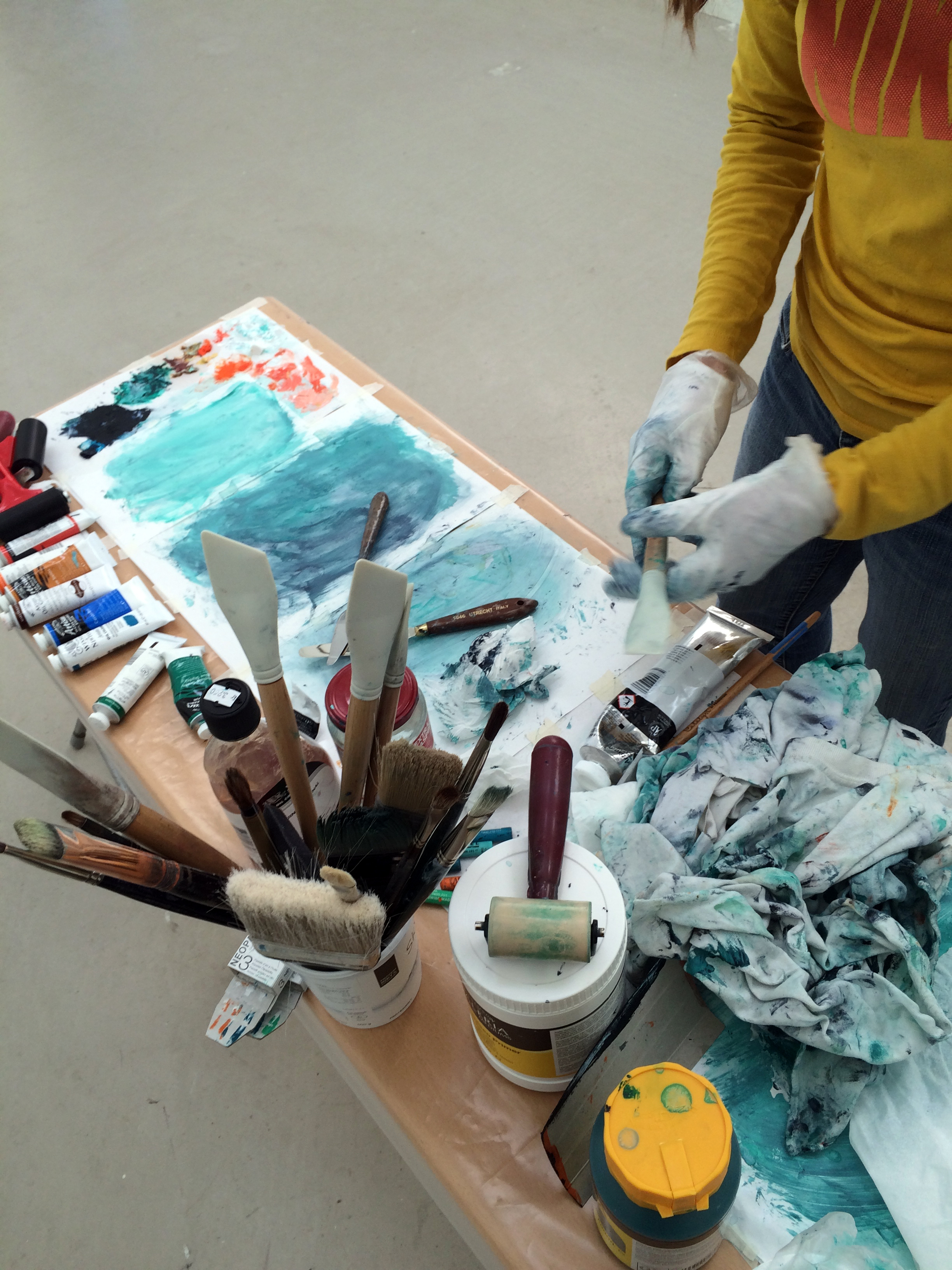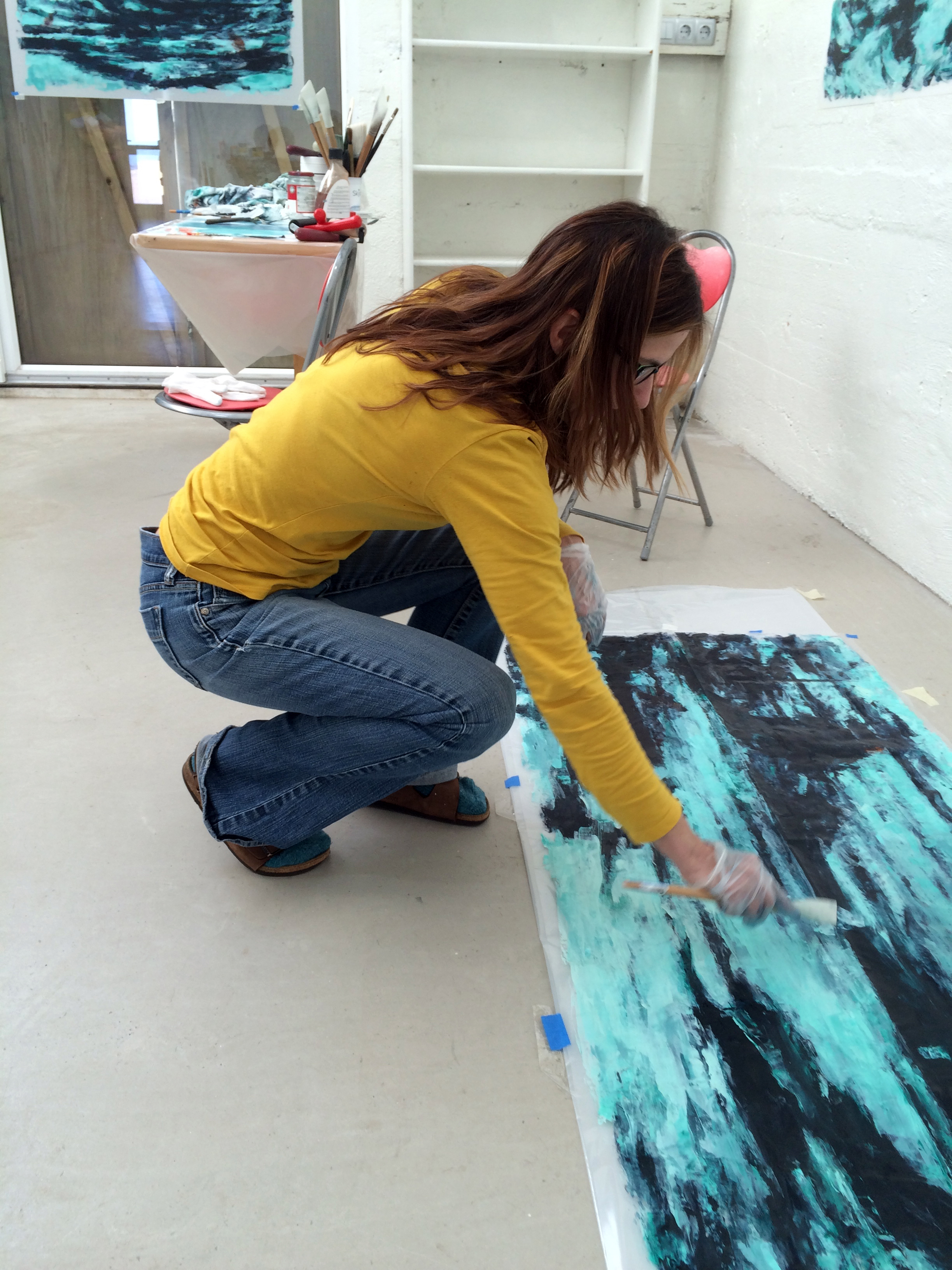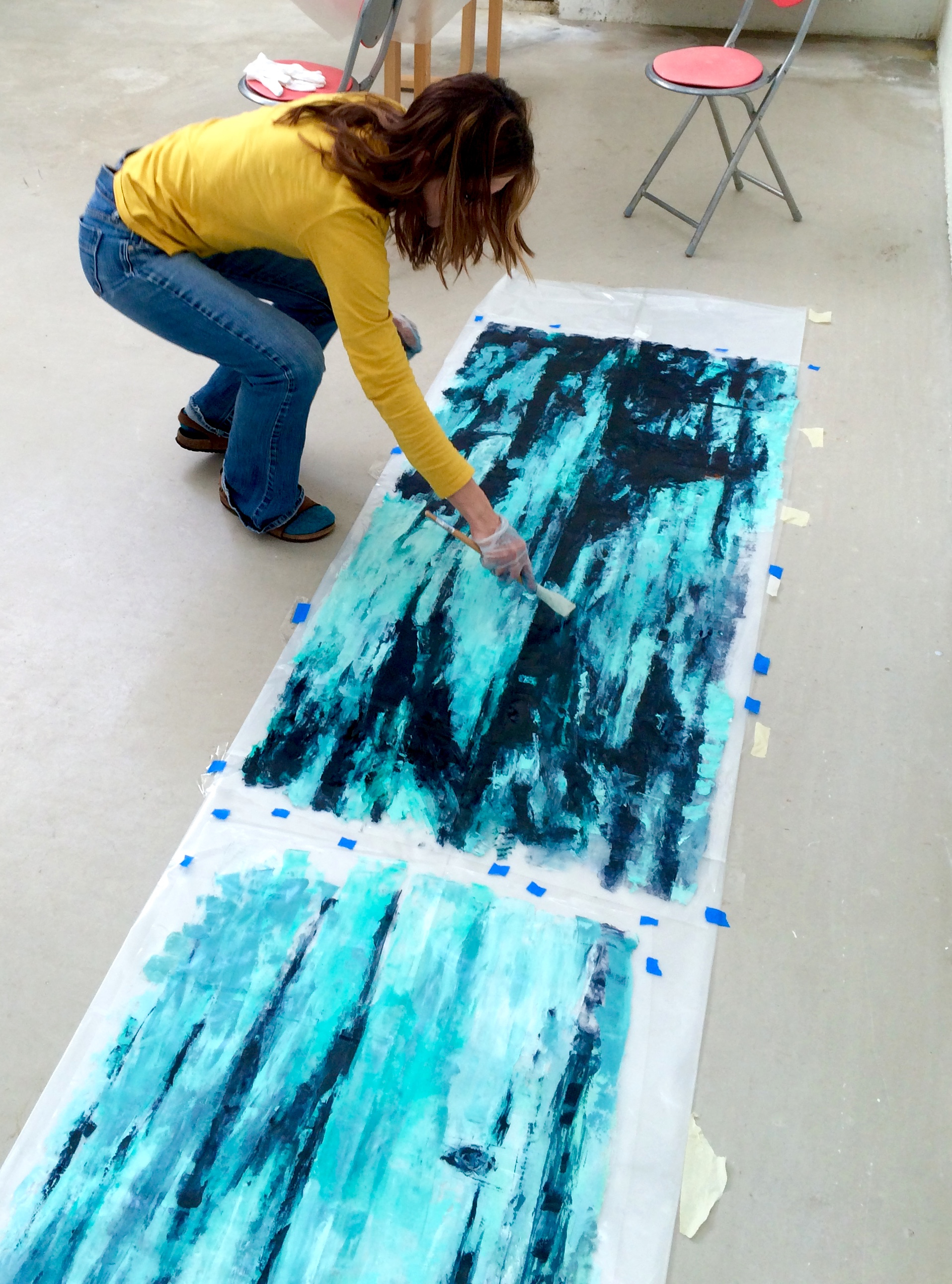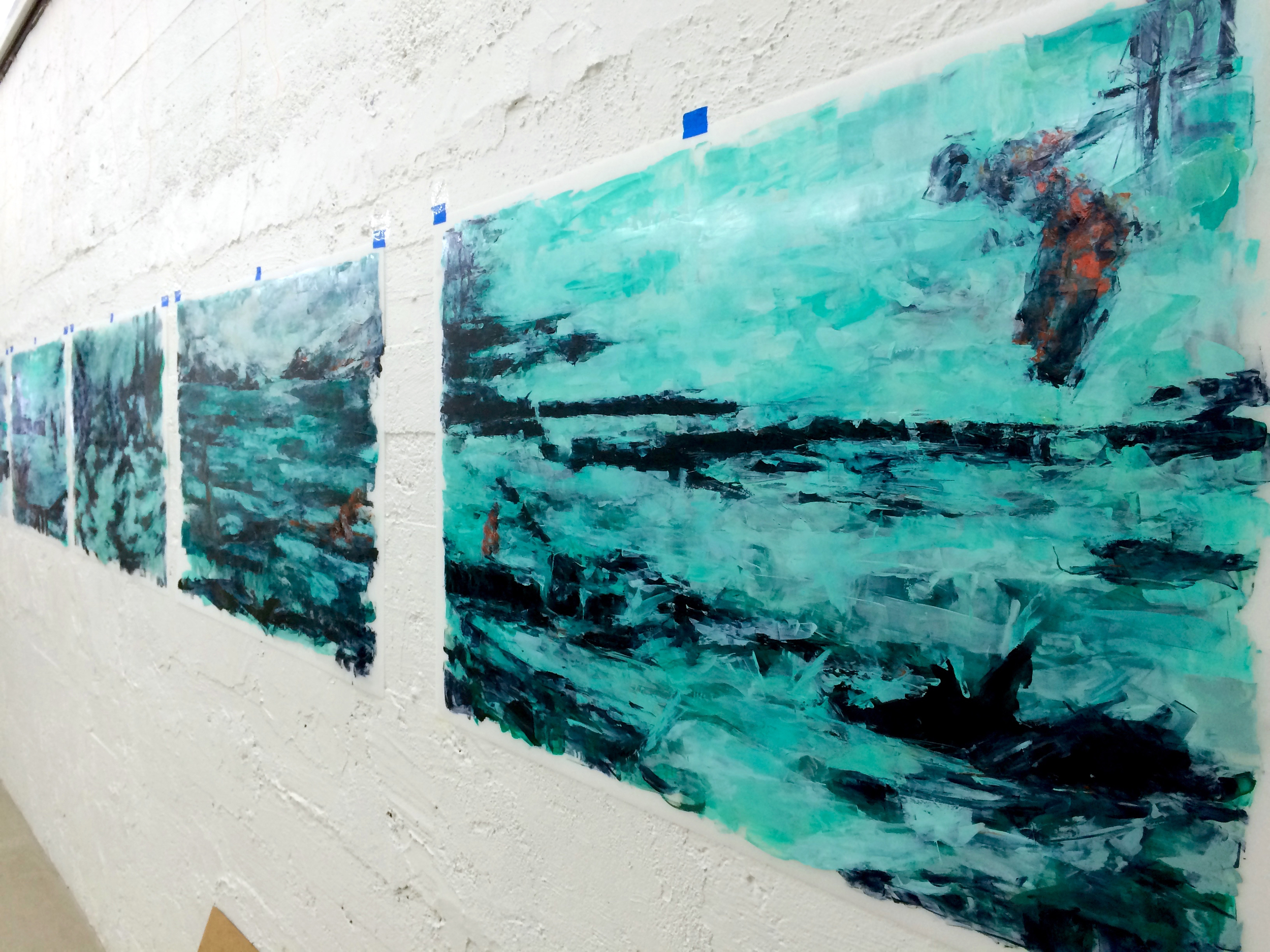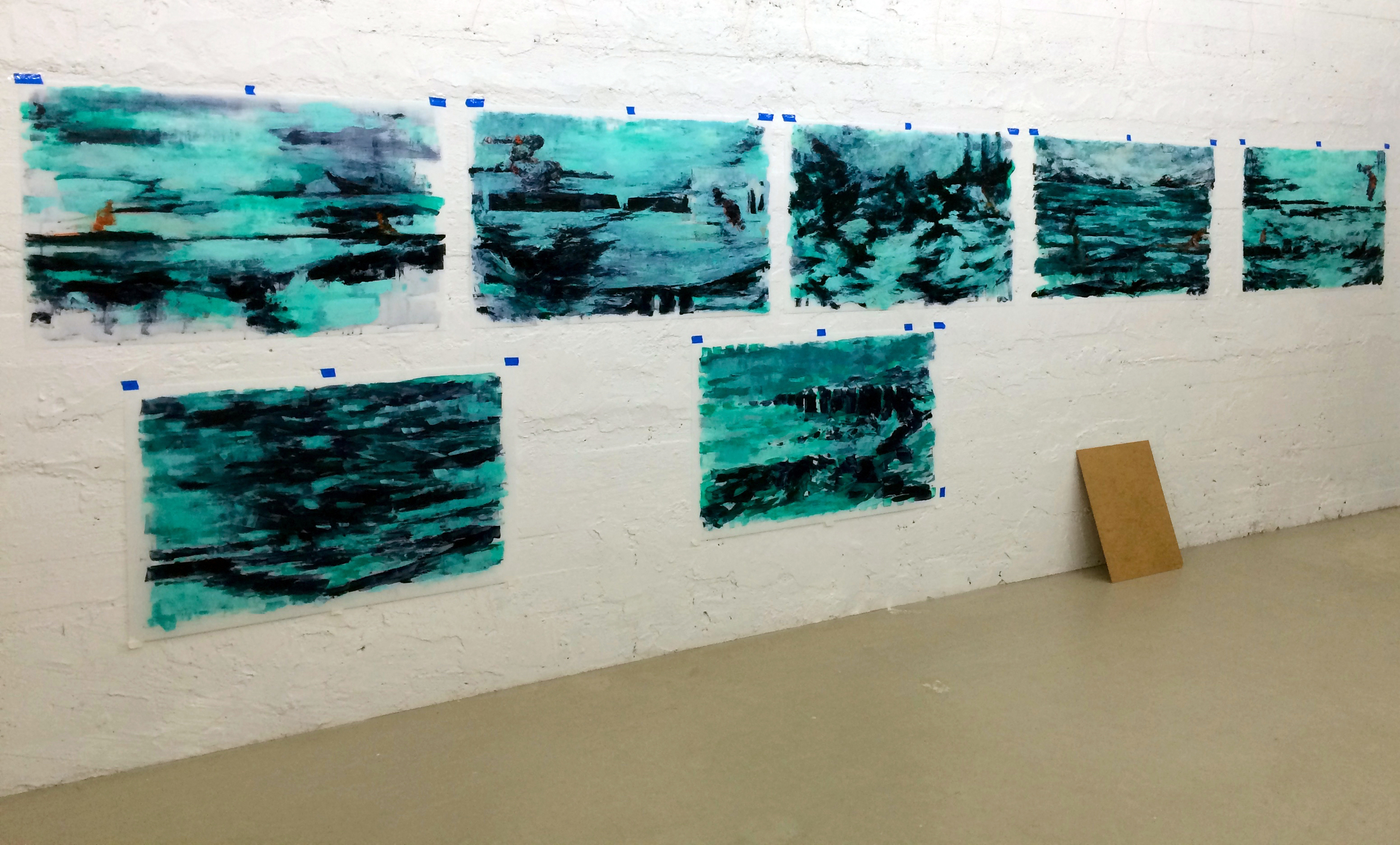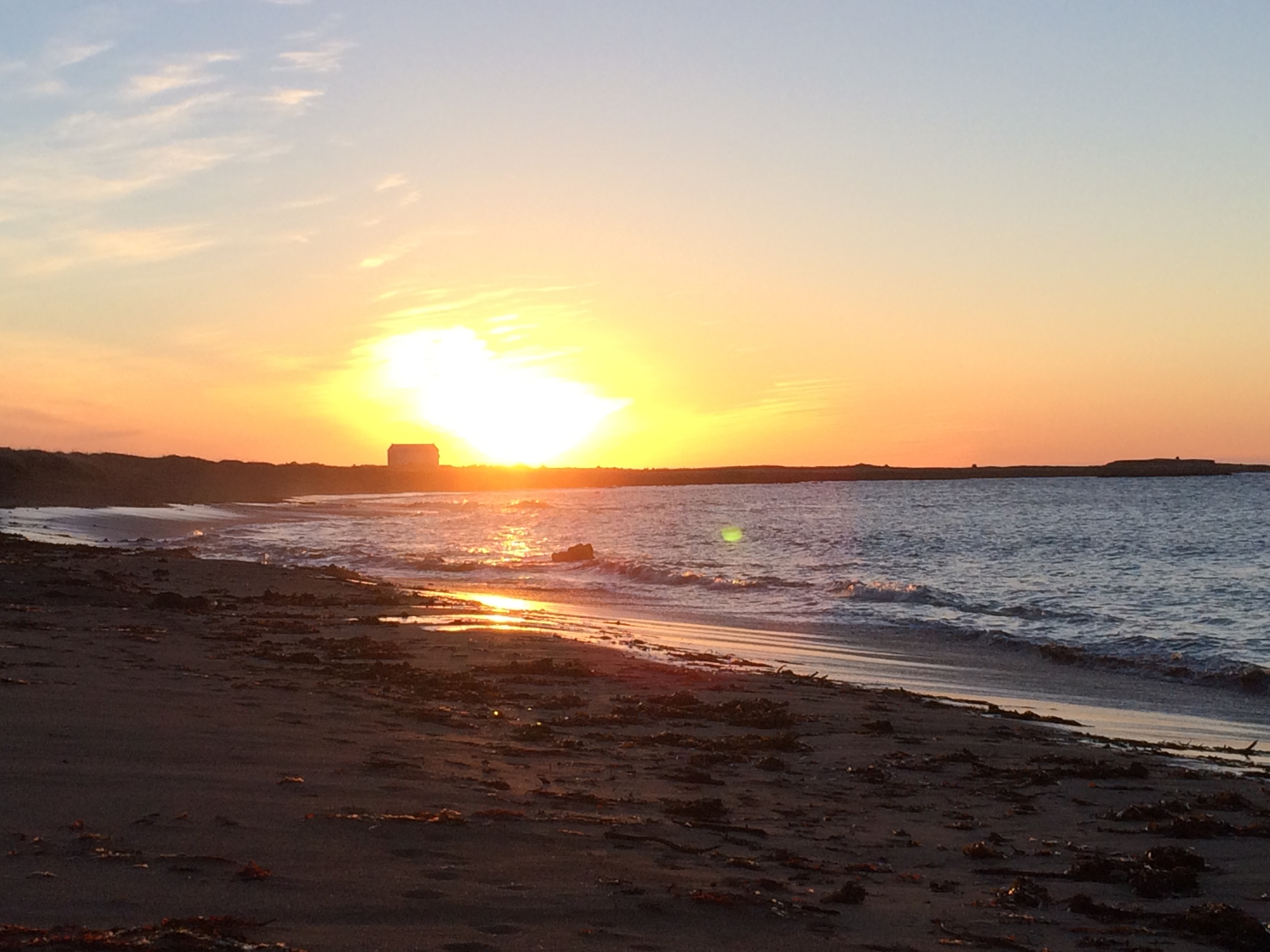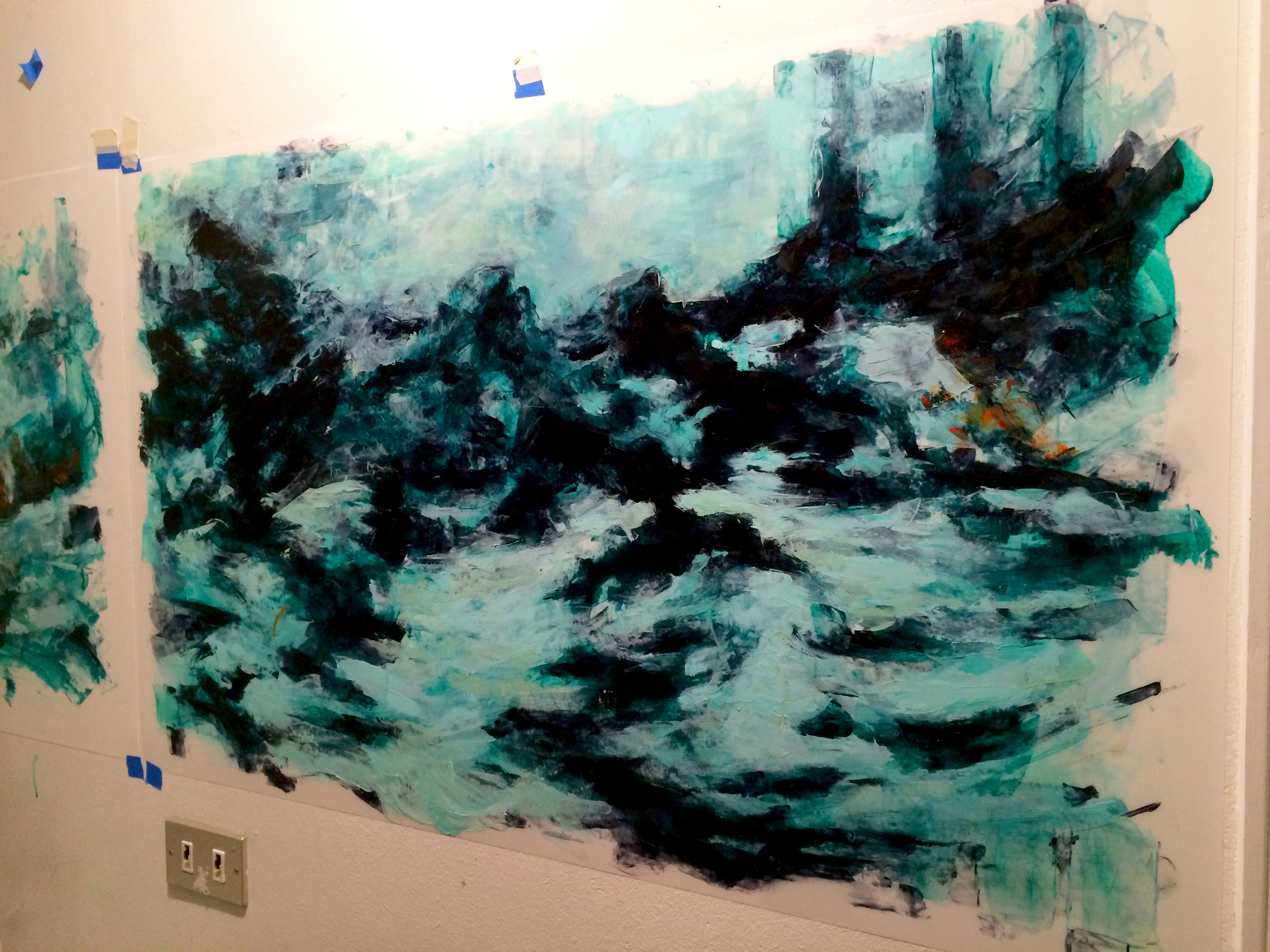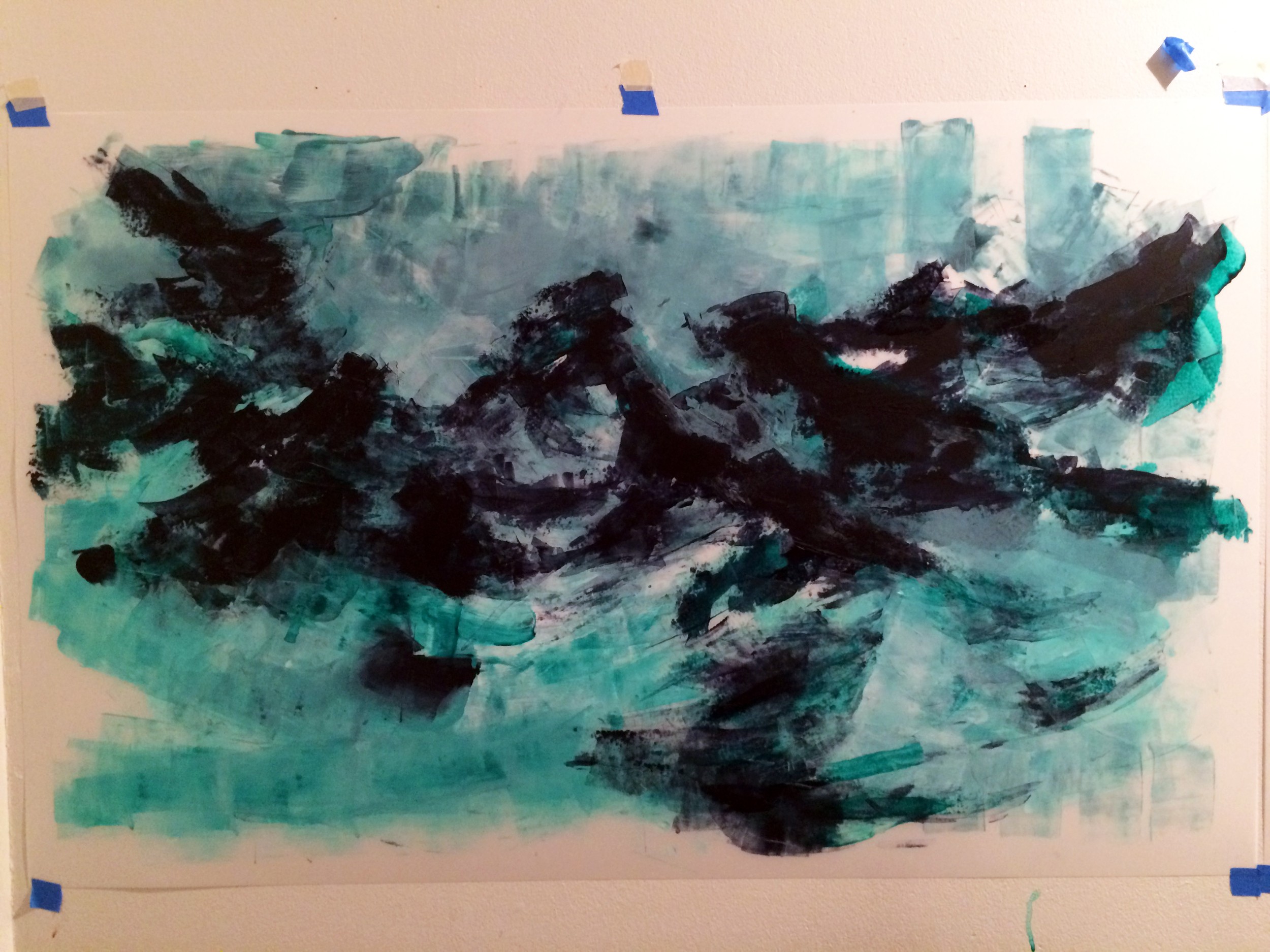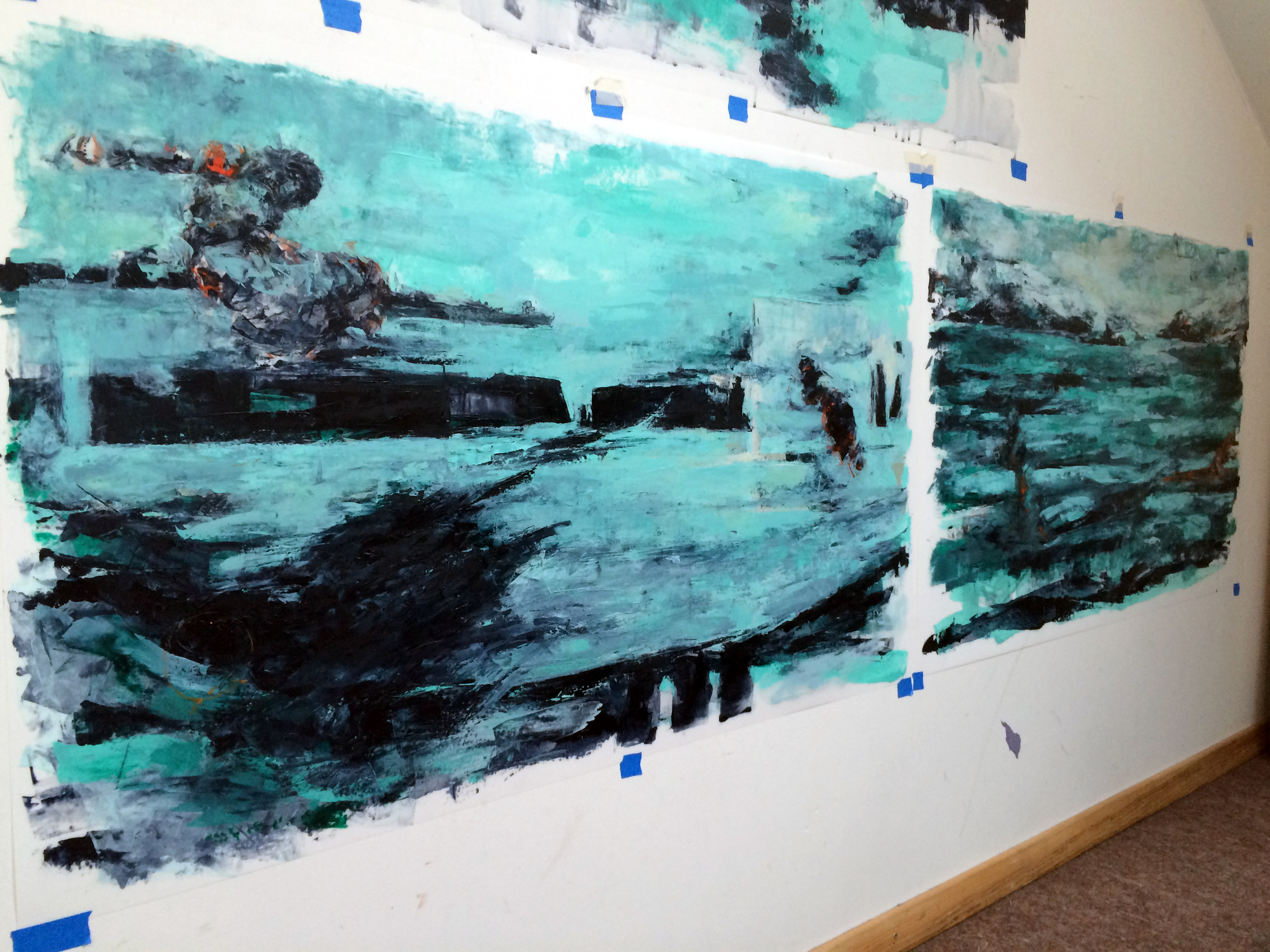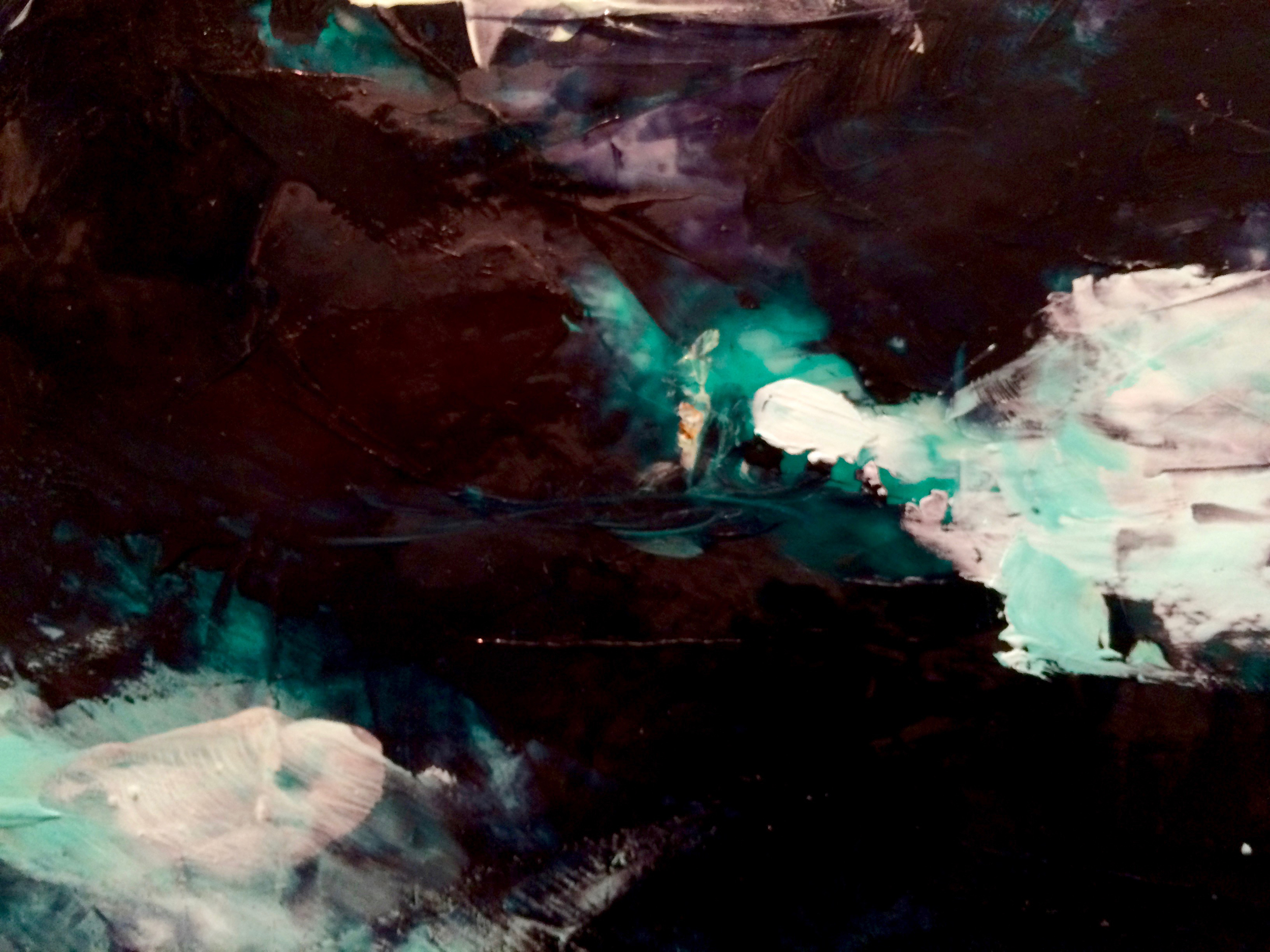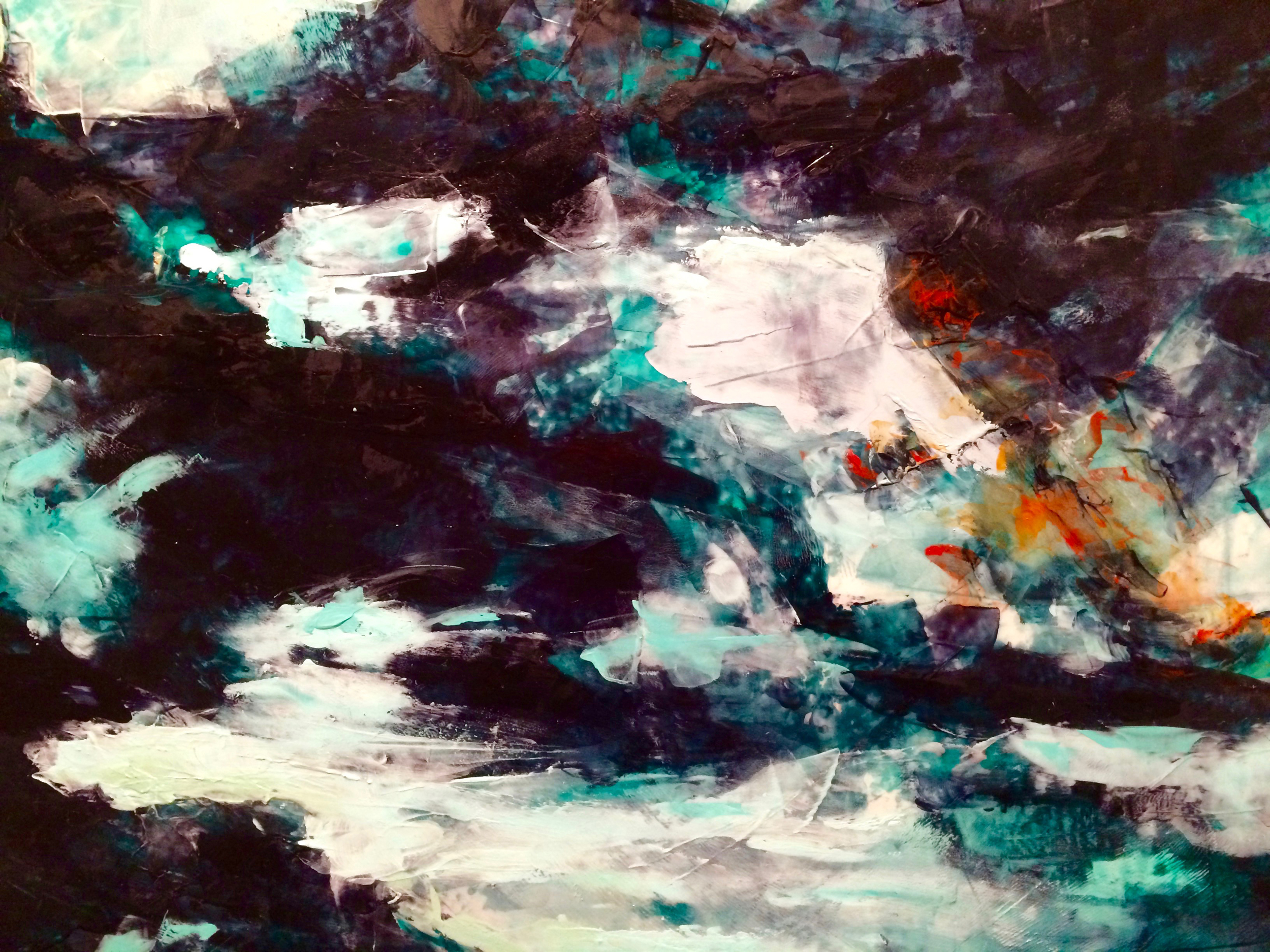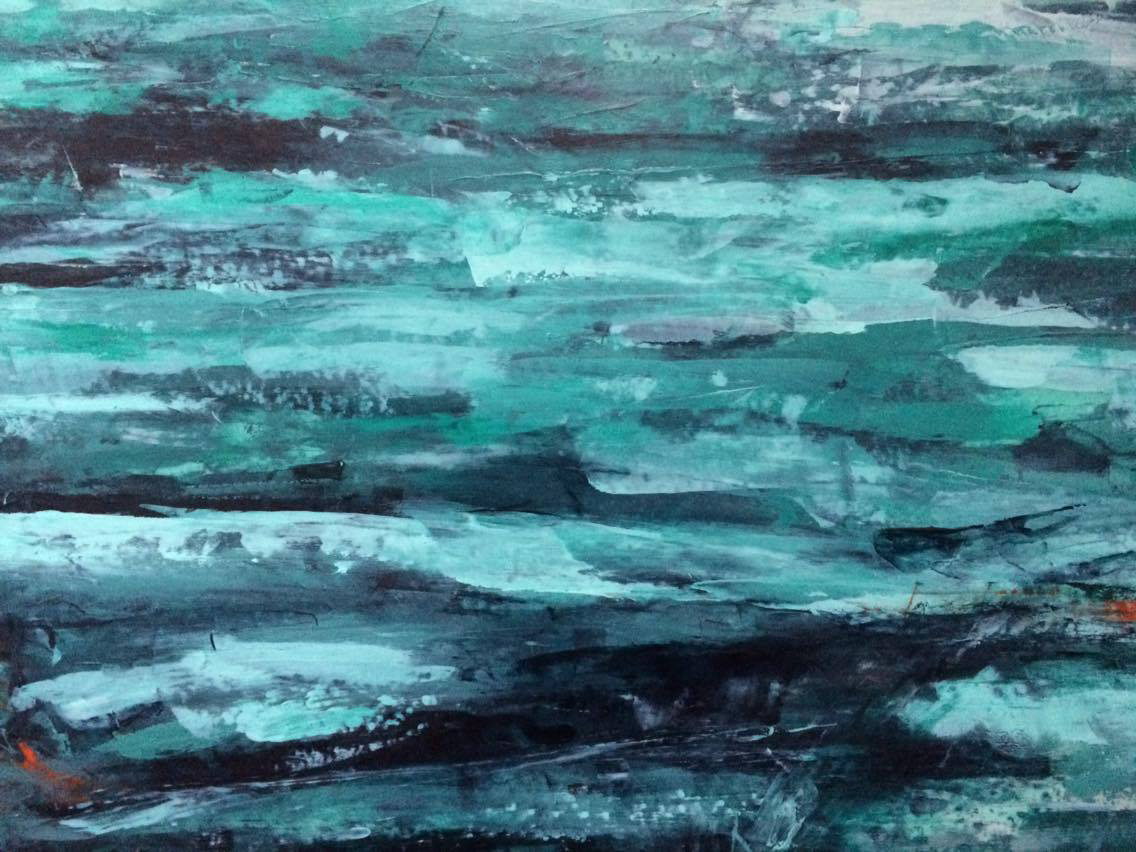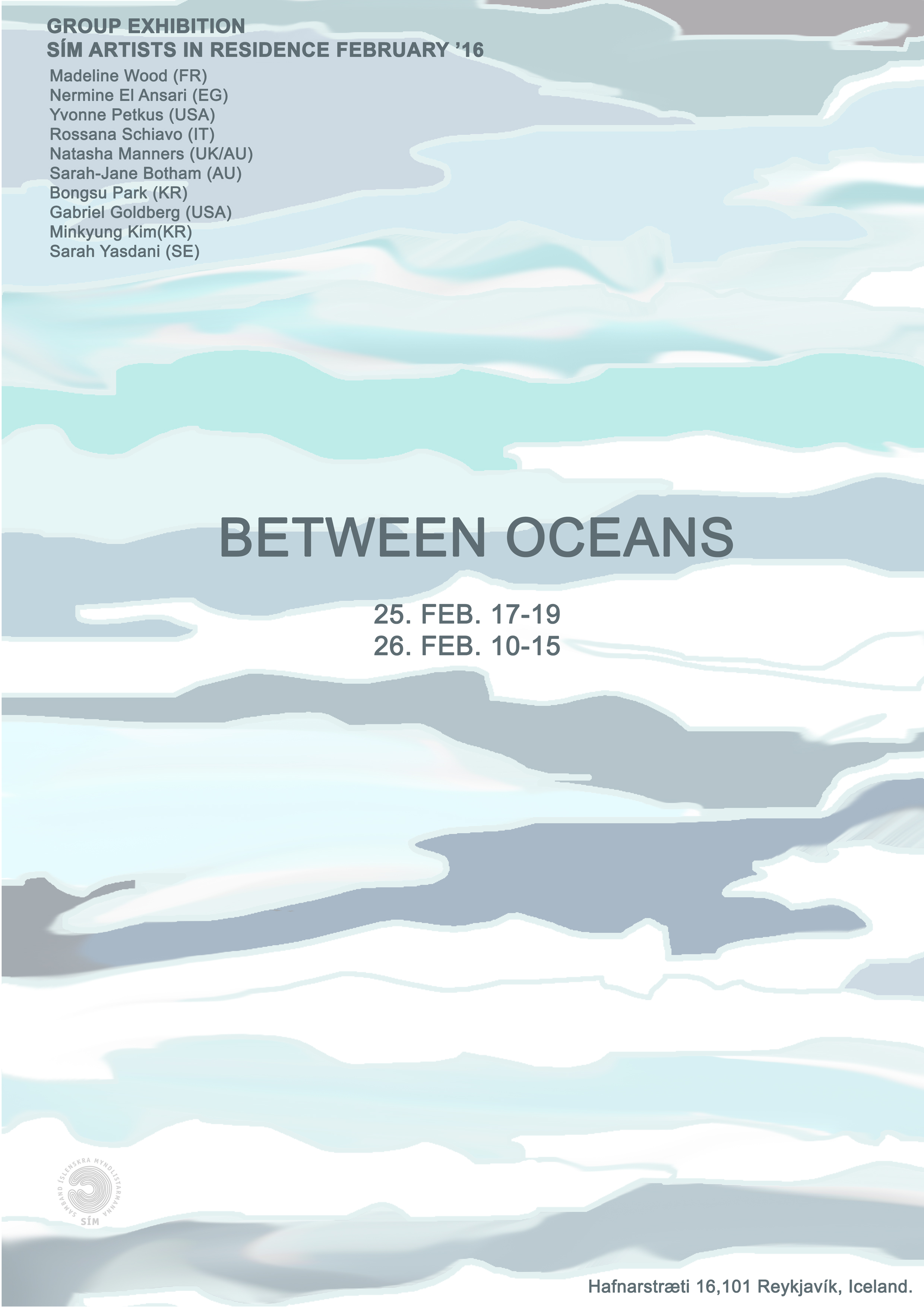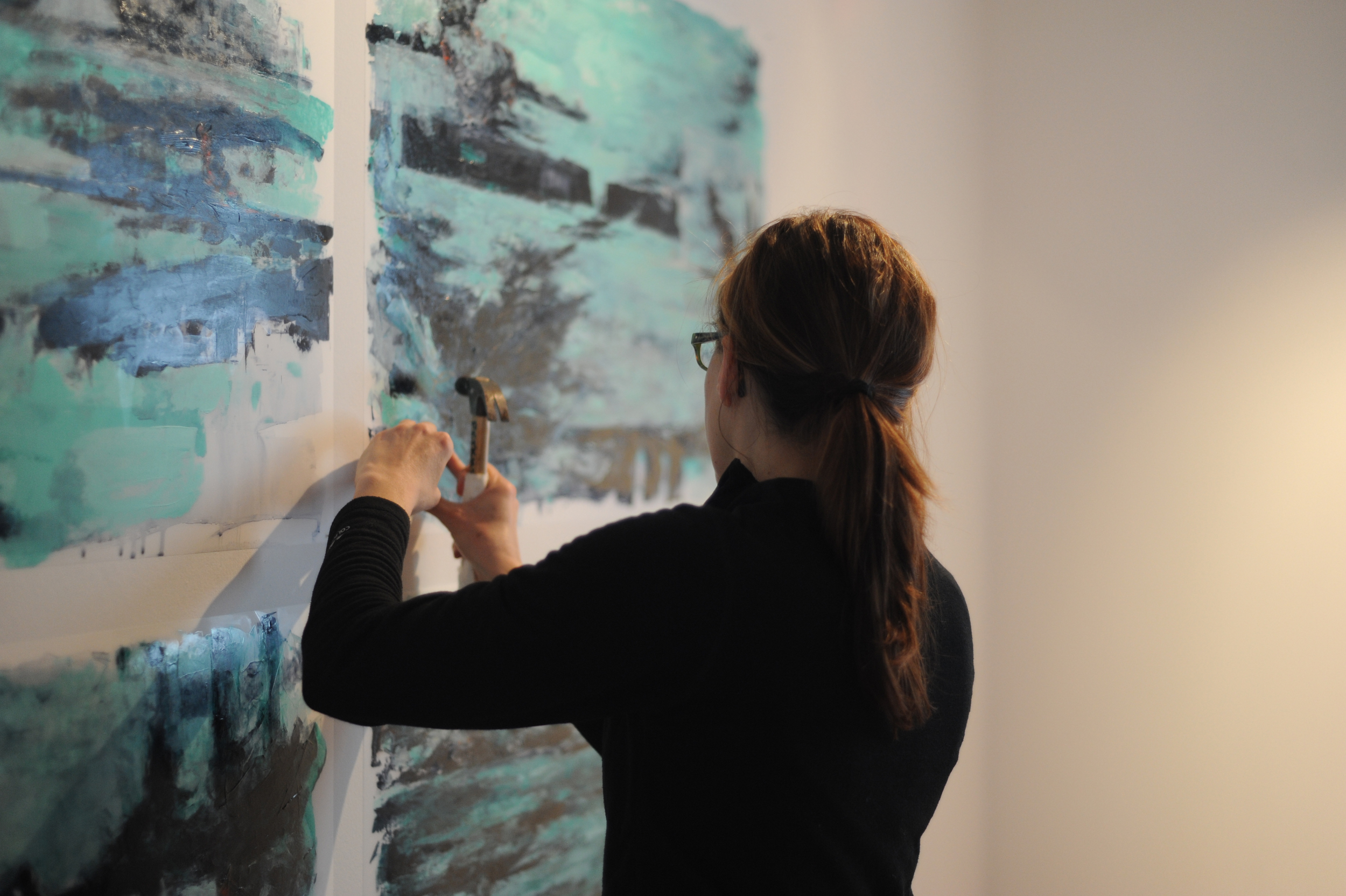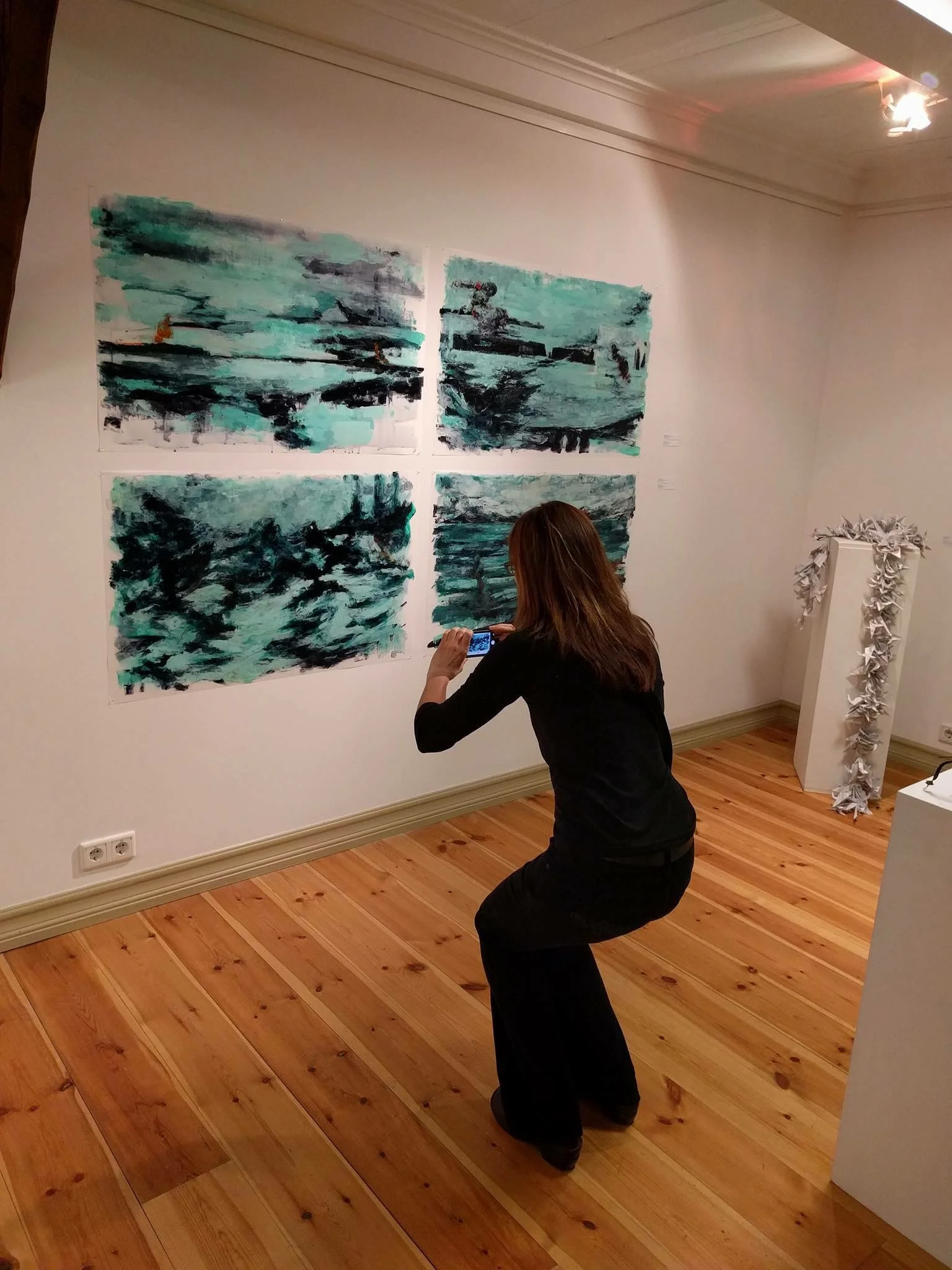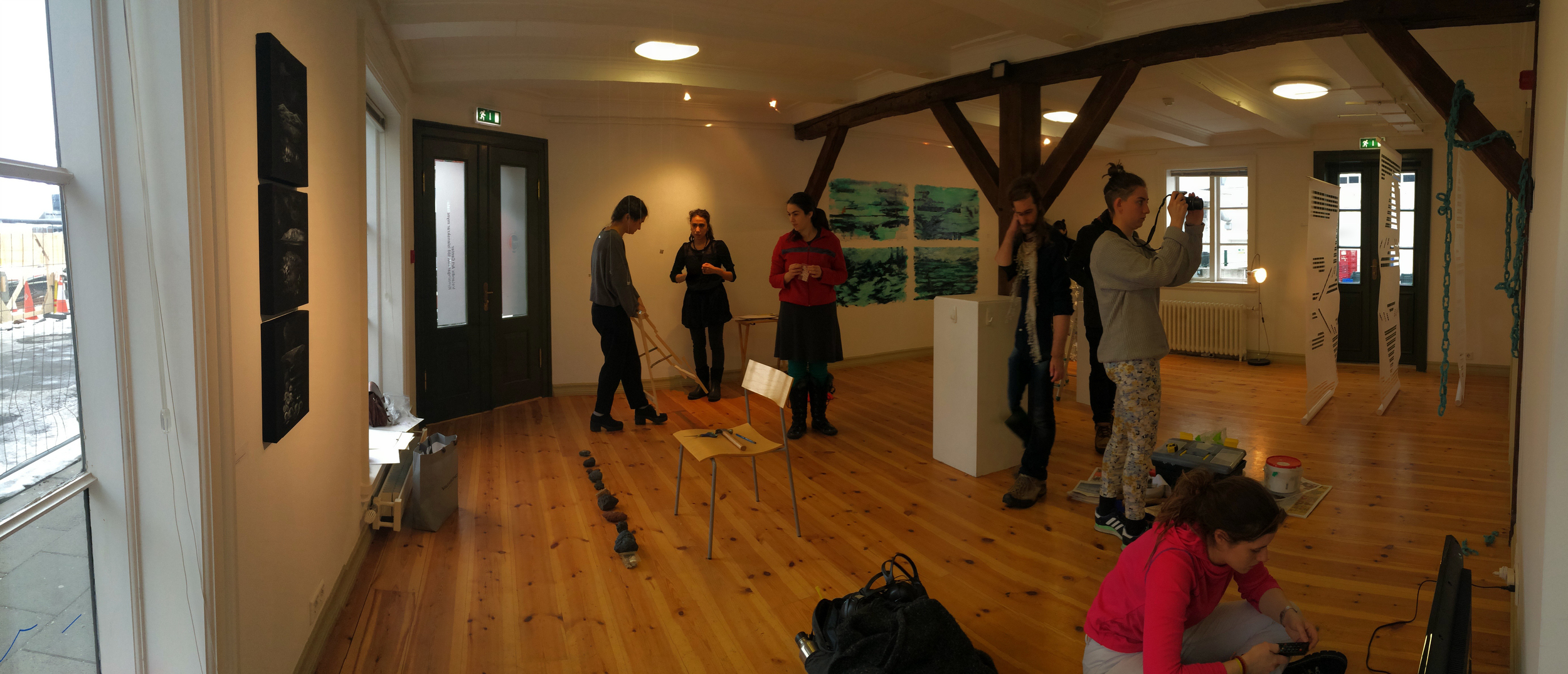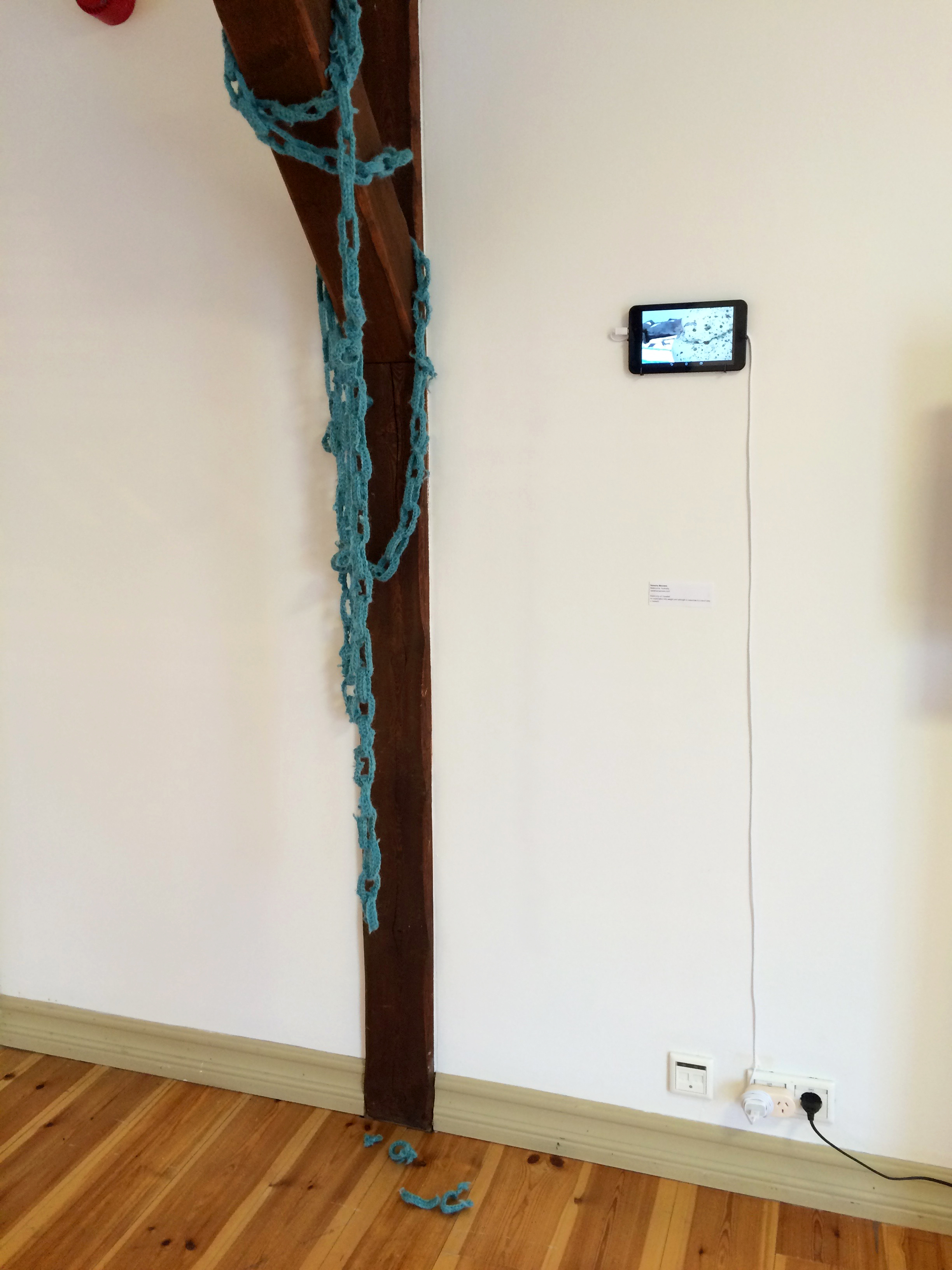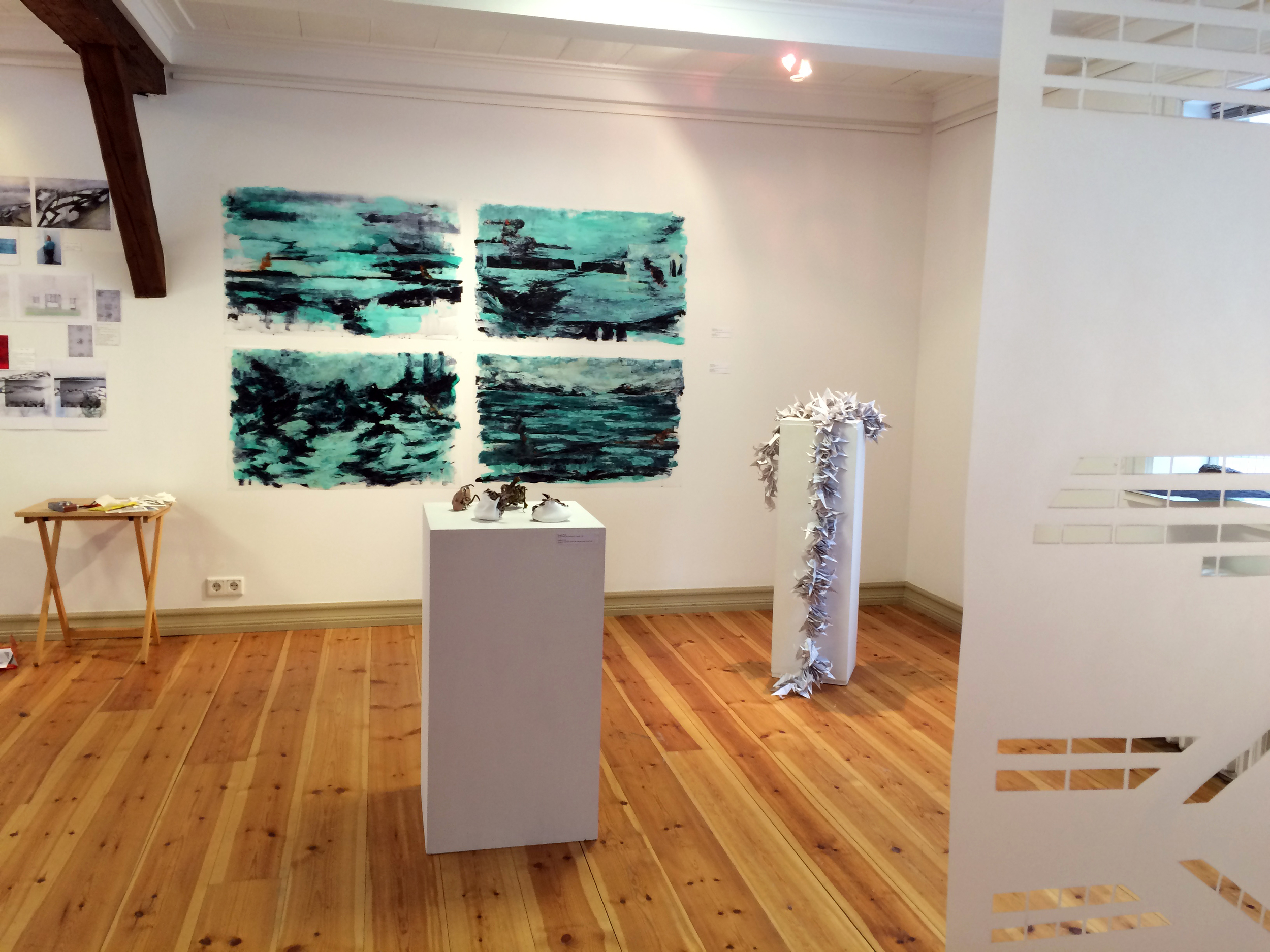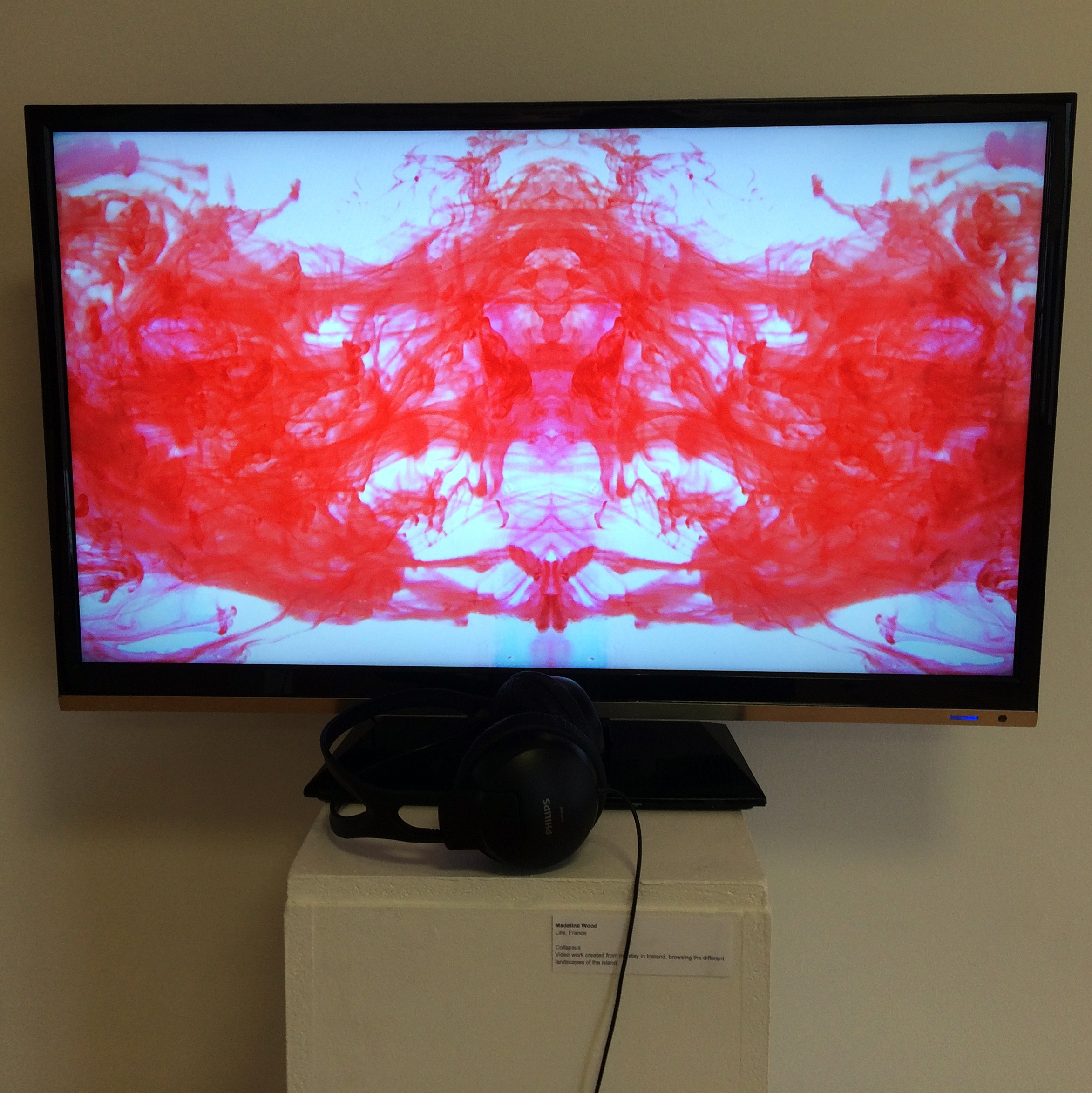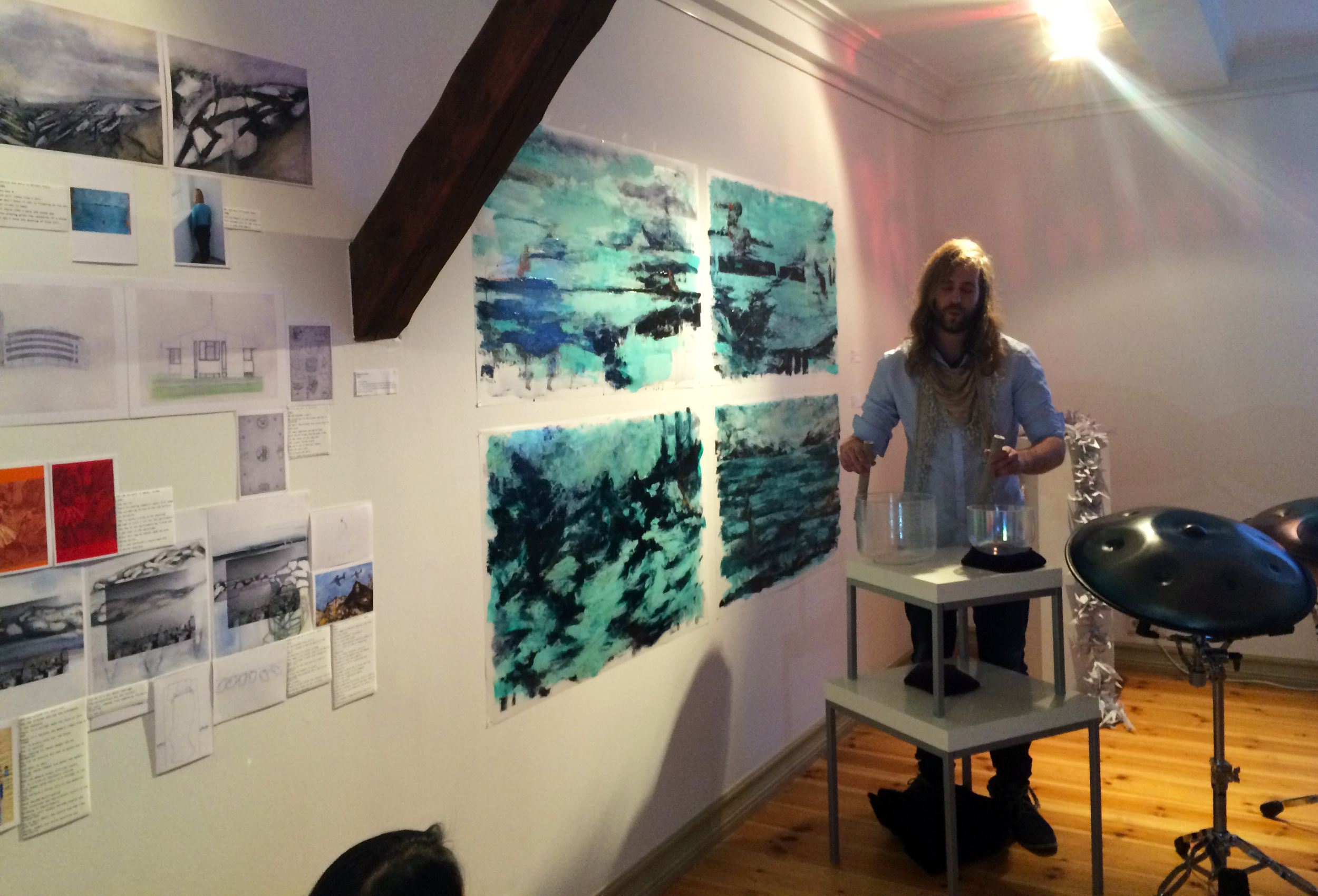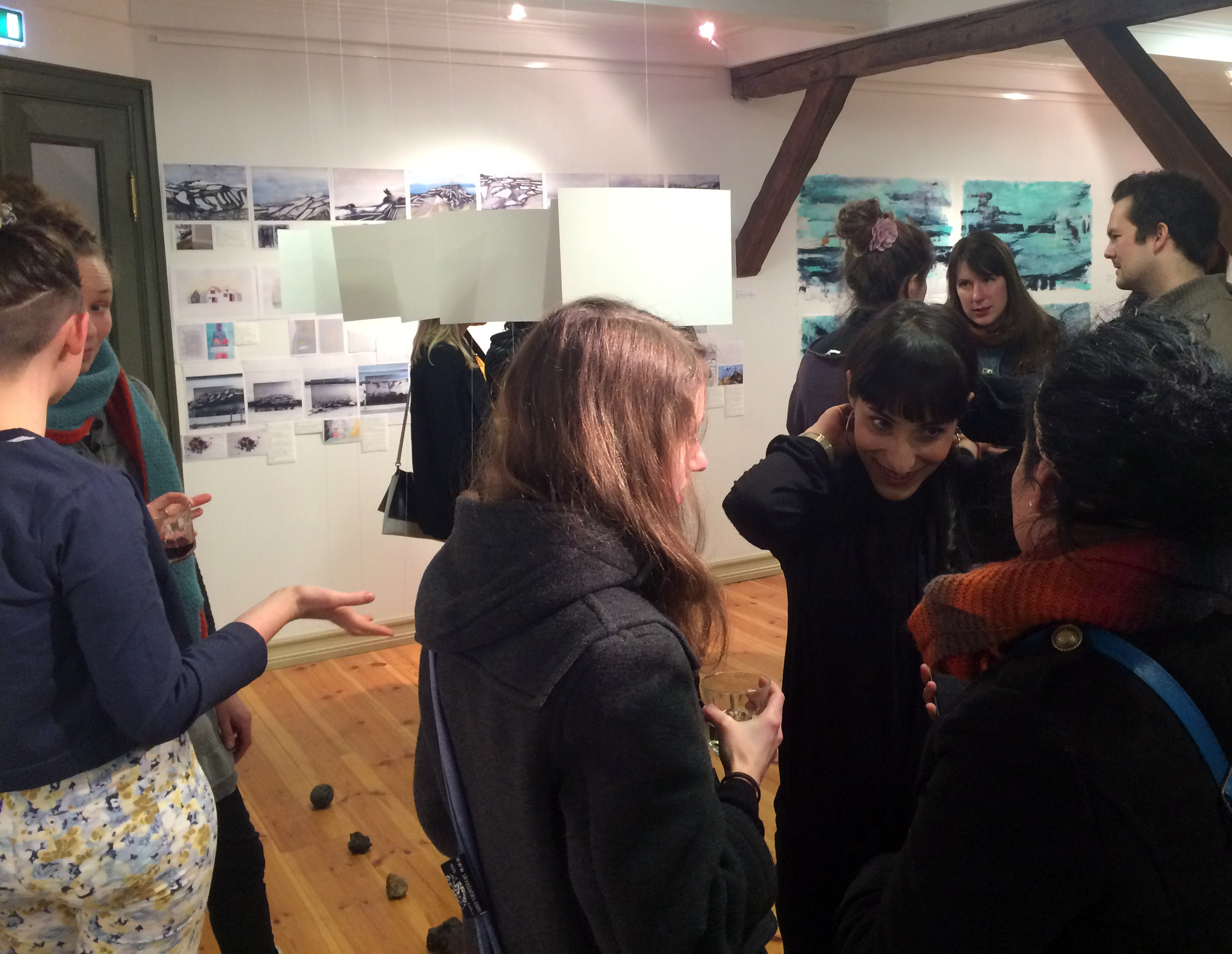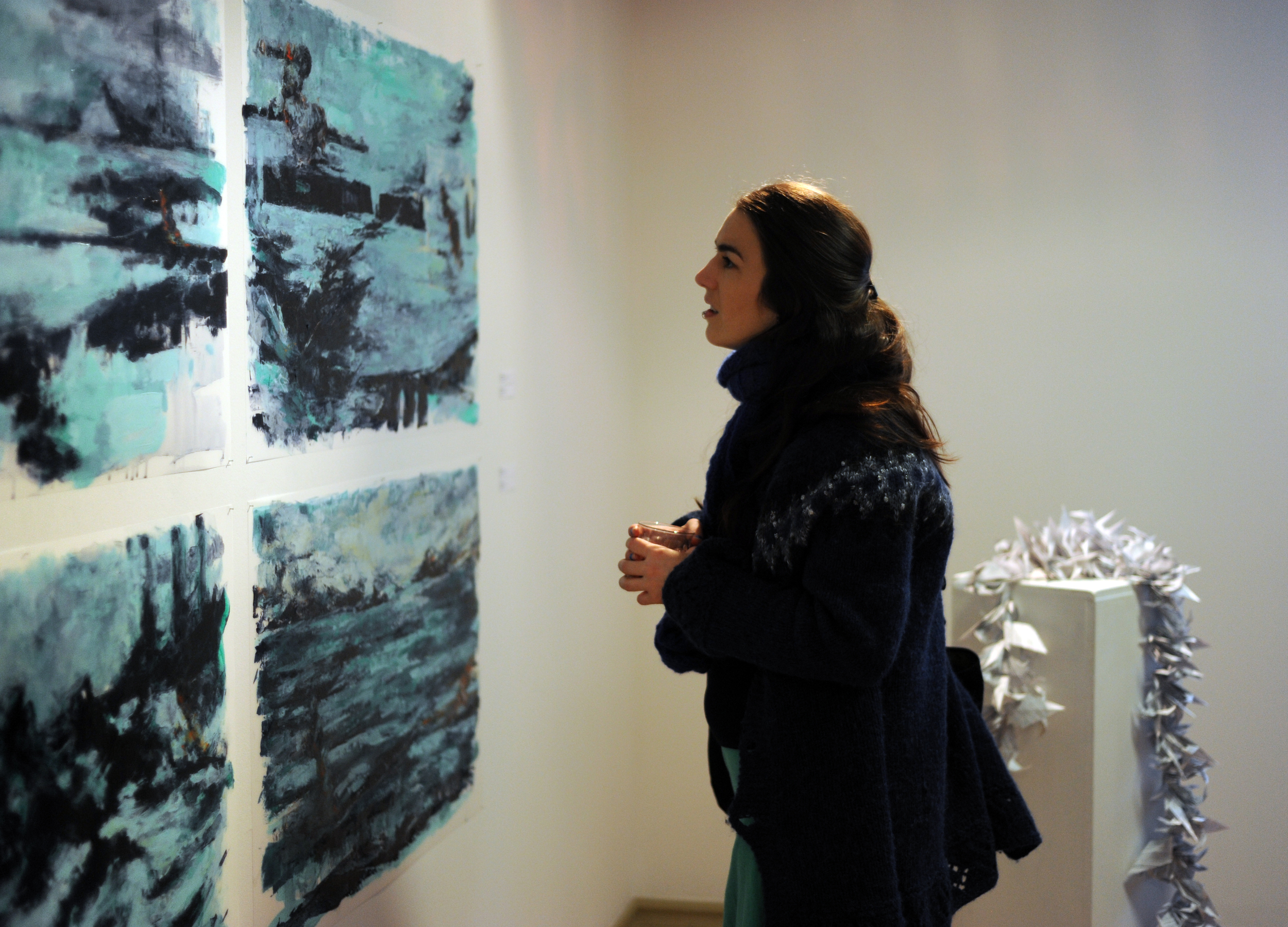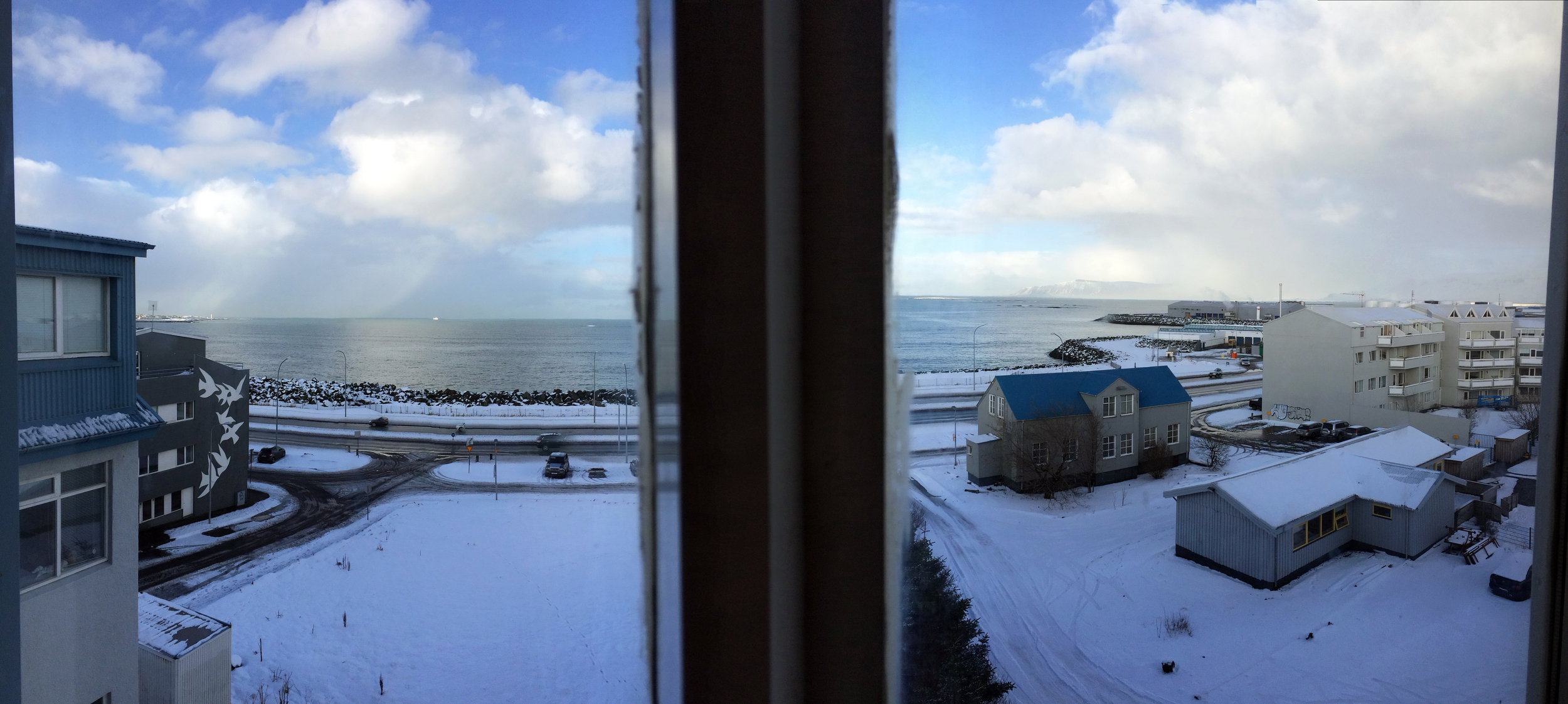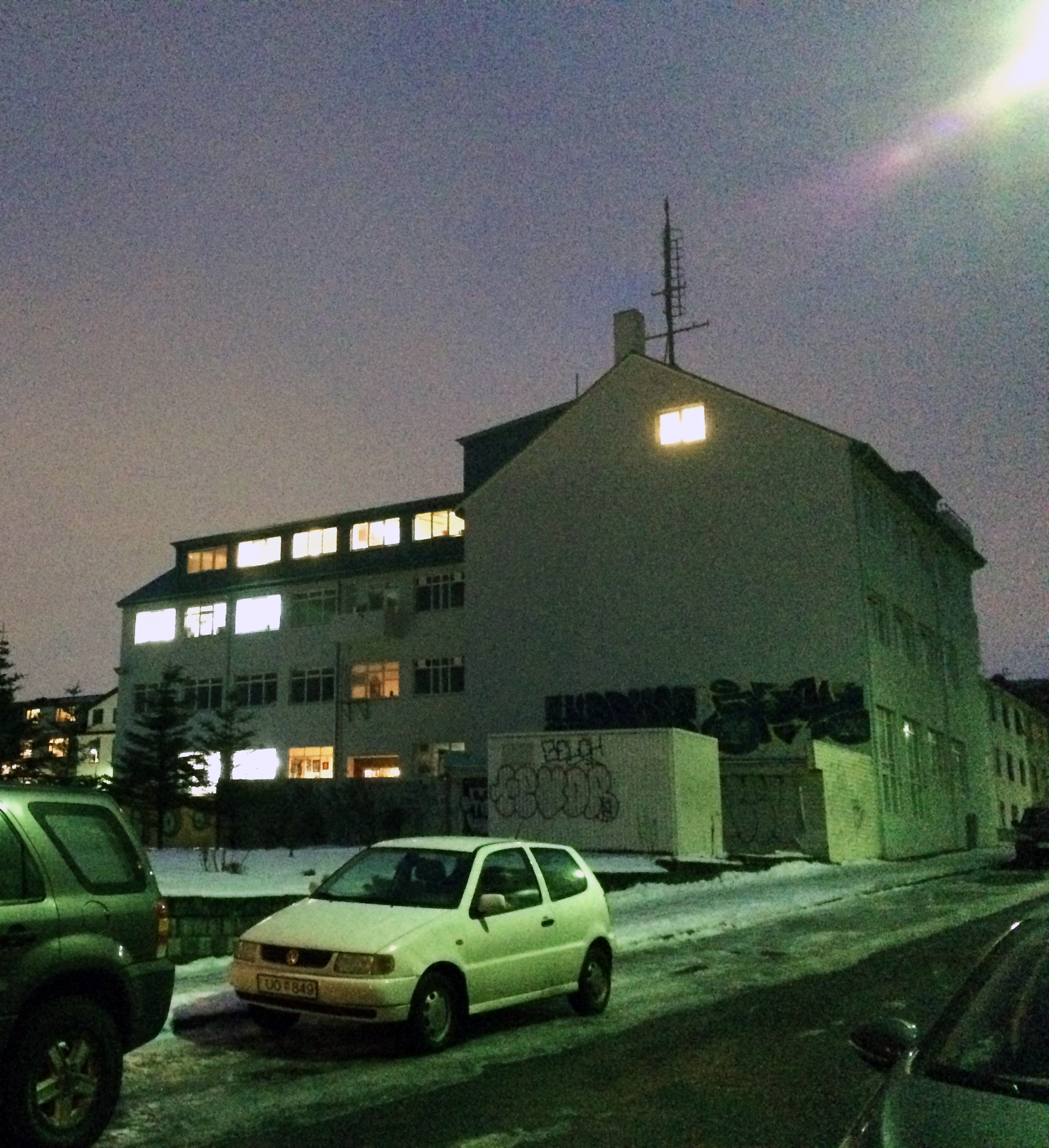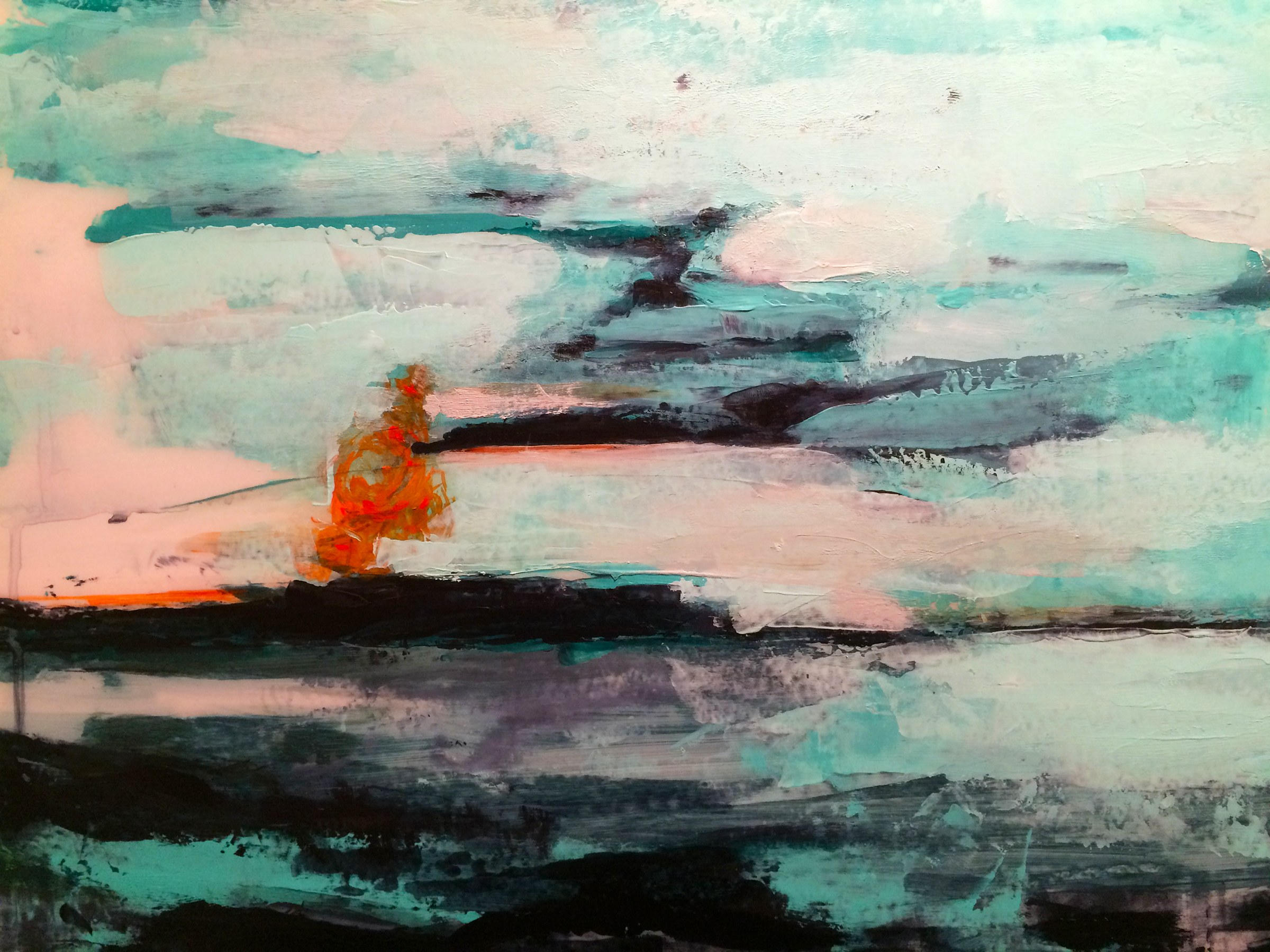"Processing the Scape", SÍM and Hvítahús Artist Residencies, Iceland was a sabbatical-related research activity that included two artist residencies in Iceland: SÍM Residency Program in Reykjavík (February 2016) and Hvítahús Artist Residency near Hellisandur (March 2016). The objective for the sabbatical period and artist residencies was to conduct studio research in the form of paintings, drawings, and installations with an emphasis on examining new sources for the environments within the work. An extension of my previous studio research, this included the use of serial painting and installations (on plastic) as a way to wade through philosophical and formal questions, explored through the additive and subtractive act of painting and a resulting, recurring figure held in expressly ambiguous spaces. The core of the work at both the SÍM and Hvítahús residencies occurred through a direct response to the extremes and the subtleties particular to the Icelandic 'scape' and the processing of that fresh input toward the needs of each new piece and larger body of work.
My expectations for what this would mean were exceeded exponentially. I thought that the Icelandic environments would be dramatic, and they were, but they were also more engaging and more intense – to a degree beyond what I could have known ahead of time. The visuals are extreme and constantly changing, and incredibly beautiful. Iceland has an energy that is palpable – one that can induce fear (people died while I was there and in places I would soon go or had just been) or awe (I found myself often unable to look away as a sky and sea would rapidly go from one state to another) or a sense of meditative repetition (watching the fishing boats, working boats, make their daily movement methodically across my horizon day and night).
My work usually preferences the 'figure' – in my case literally, as large bodies dominate my works, acting within vague, psychological land/seascapes that were formerly based on input from Seattle and Greece. My goal in Iceland was to shift this and instead preference the 'ground', shifting scale and submitting these smaller figures to the forces of nature. As a long distance runner, this was compounded as my body was subjected to ice and snow, cold, hail, and the ever-present winds, particularly extreme during the second month on the Snæfellsnes Peninsula. As such, my work was informed not only by the visual input but also by what affected me to my physical core – I felt it – and worked to translate it through the act of painting.
The flow between the two residencies worked out perfectly. For the first month, I worked and lived with nine other artists from all over the world (France, Egypt, Italy, Australia, South Korea, and Sweden) within the city of Reykjavík. This allowed me to acclimate to Iceland, have a daily discourse with other artists, and take advantage of Reykjavík activities, including exhibitions and other cultural opportunities. Two examples that stand out were being able to sketch from the sculptures of Einar Jónsson and participating in a dance workshop during the Reykjavík Dance Festival. Einar Jónsson, known as Iceland's first sculptor, created figurative works of uncommon drama, physicality, and flow. I was able to go back to the Einar Jónsson Museum several times and found a kinship with his sculptural expression of the human body entwined with Icelandic mythology. These found their way into my painted works through the sketches completed on-site. The dance workshop was also an unexpectedly perfect fit for the questions I was asking in my paintings. It was led by Danish choreographer, Marie Topp. Just as I am a process painter, she is a process choreographer, needing dancers in person to physically work out her ideas and develop her work. Our ideas and ways correspond very closely – her goals include work that investigates "forces against the body" found through a "physicality that leads to form/narrative". This is exactly what I am doing through my paintings.
The work I created at SÍM was a response to the water and landscapes from just outside the residency (two blocks from the sea and surrounded by mountain ranges) as well as from a trip to the southwest of Iceland, which included seeing the Gullfoss waterfall (a huge series of waterfalls frozen in their February state) and the deep, glowing crevasses of the Sólheimajökull Glacier. I would take photos but also just look and take in what I saw and then respond through painting and drawing once back in my studio. These developed as fragments and accumulations, building as layers of information that formed their own logic and meanings or connections. The figures shrunk and became even more embedded within their landscapes, pressured by the forces of their environments. The color, too, while an extension of my former palette, shifted and pared down while in Iceland, a response to the white of the snow and ice, the deep dark of the silhouetted mountains, and to the constantly changing blue/green/teal of the ocean and sky. This palette was punctuated with moments of orange and red, signifying a body or a movement, struggling within the vast scapes.
For the second month, I shifted from Reykjavík to the Hvítahús Artist Residency on the Snæfellsnes Peninsula. This is a remote location, on the very edge of the Snæfellsnesþjóðgarður National Park, with a few small towns nearby. The residency is housed in a former icehouse (used to store fish) and is the last remaining building from the Krossavík harbor, which relocated in the 1940s. Remnants of the fishing village remain visible as stone walls projecting into the Atlantic Ocean and other land works that had defined the town. The studio was a large two-story space, ideal within which to expand on the research begun over the previous month.
The main goals of this second residency were to work (paint) and run. The running allowed me to experience this West Fjord environment and landscape in a particular, intimate way. The weather during March was extreme on the peninsula, adding to the forces that I was already investigating in my work. I encountered winds so fierce that I had to use every bit of strength to just move forward and stay on my feet (not always successfully). I ran with views that shifted from a moon-like scape dotted with blocks of volcanic rock, to a huge glacier atop a series of volcanic mountains that all gathered into one stunning form, to the Atlantic Ocean with its waves suddenly, forcibly crashing up stacks of black, basalt cliffs. I took photos everywhere I explored and fed those, and my actual experience of each place, back into the work in the studio. There was also a three-day storm with winds so strong they tore the asphalt off a road just 30 kilometers from where I was. I did not go out for those three days and instead painted through the unnerving sounds assaulting my icehouse and the fear it induced.
I think my battle-type process, where sources are sieved through the physical struggle of marks in continual negotiation, fought hard, made sense for responding to Iceland in particular and I hope a poetry was found in each truce.
The idea, whether in Iceland, or back in my U.S. studio, is to find each painting and its imagery through the rhythms of formal questioning, as well as through the resistance any artist feels when moving toward intention. It is a searching, a responding, to make sense of meanings that begin to be revealed in each single piece and across the many happening at the same time. Each painting is the residue of the act of working toward a semblance of meaning and are about, come from, a type of grasping.
I would like to end with a large and heart-felt thank you to all those I met and worked with in Iceland, to my partner, CJ, for taking care of everything (and everyone) at home, and for the support I received through an International Activities Grant from the WKU Office of International Programs and a QTAG Award from Potter College of Arts & Letters.




